 November 23rd, 2009
November 23rd, 2009
#1
Downtown Abilene: the good, the bad, the ugly. A [unknown] West Texan takes a look at downtown Abilene in 2009.
Abilene, Texas: located about 2 or 3 hours west of DFW by car. It is
home to about 116,000 people (160,000 in the metropolitan area). Like
many towns around the south, its downtown has endured years of neglect.
Only in the past 20 years have portions of it slowly begun to be
rehabilitated and turned into a source of civic pride.
This tour doesn't stick to the shiny, polished path. I started off in
southern downtown, in an area surrounding the Taylor County Courthouse. A
few days later, I ventured through the restored area and then back off
the beaten trail into the under-loved warehouse district, which has
suffered two devastating fires since September.
Disclaimer: I know there are no people. I have no good excuse for this.
Abilene is not a city of pedestrians. Just accept that fact before
proceeding.
[A few editorial comments in brackets]
```````````````````````````````````````````````````````````````````````````````````````````````
A bit of history to start with. Abilene has had 3 courthouses over the years.
The first one, built in the late 1880s, was a typical Texan gem, complete with clock tower.

Deemed to small for the burgeoning city by the 1910s, it was demolished
to make way for a more modern (and larger) neoclassical box in 1914.
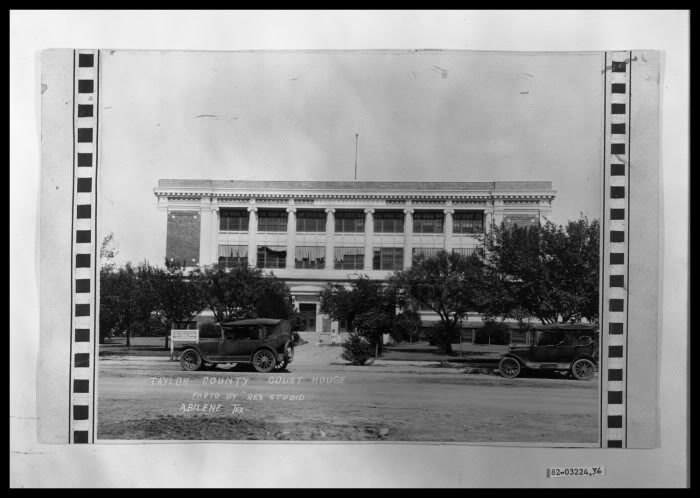
By the 1970s, Abilene had far outgrown its courthouse and a new one was erected across the street, in typical 70s taste.
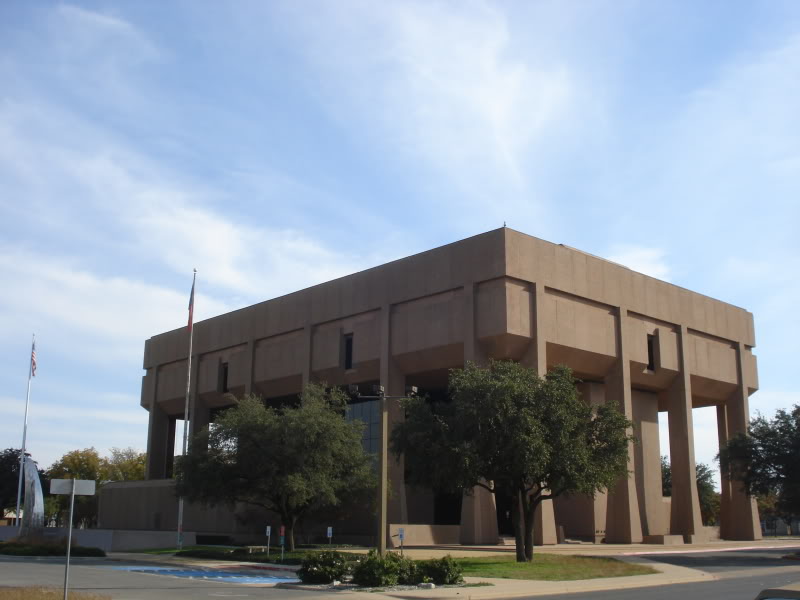
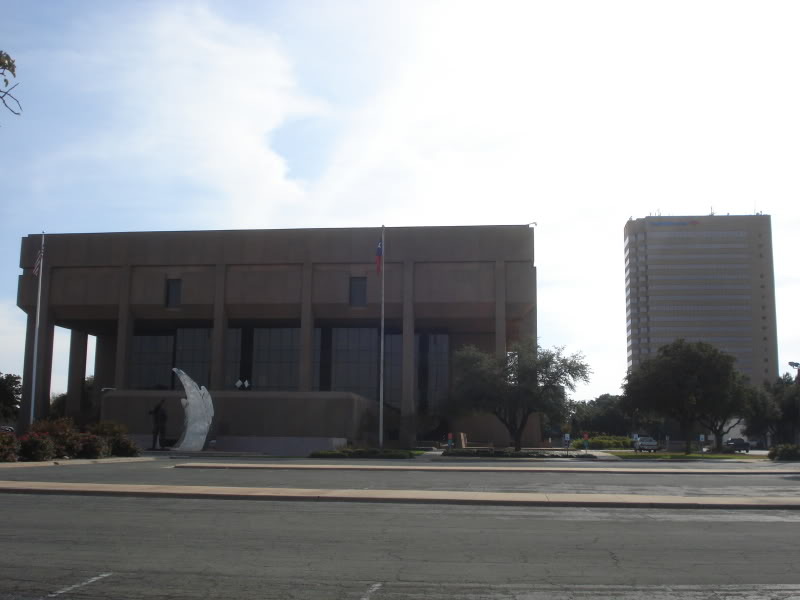
The old town square is basically dead, save a couple random cafes and
shops. Mostly, the few remaining storefronts are home to lawyers'
offices.
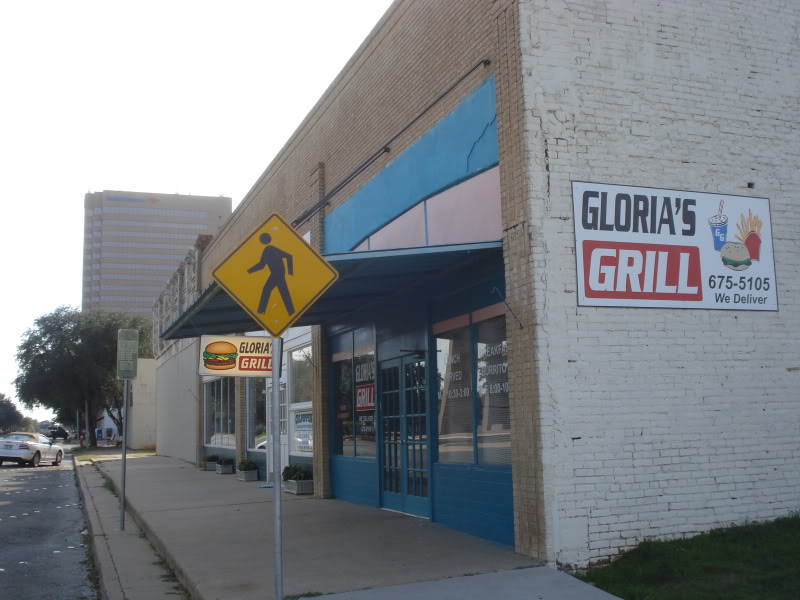
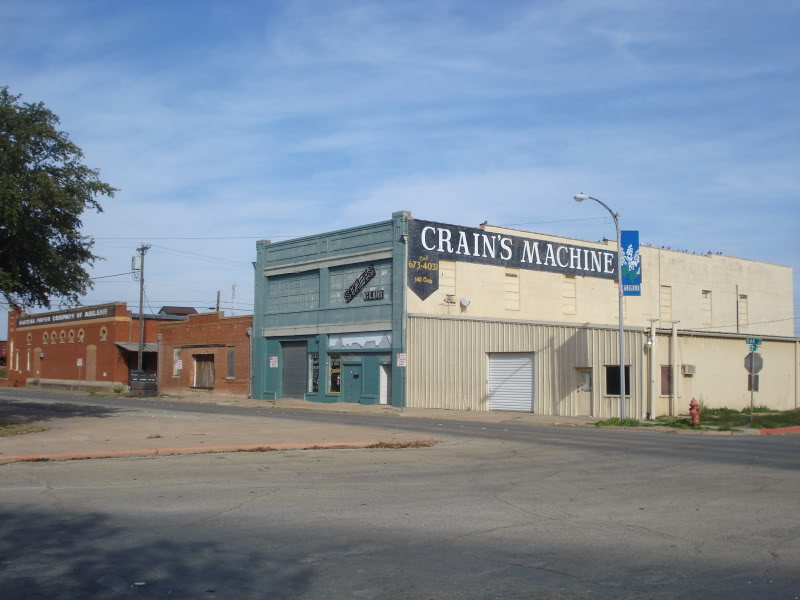
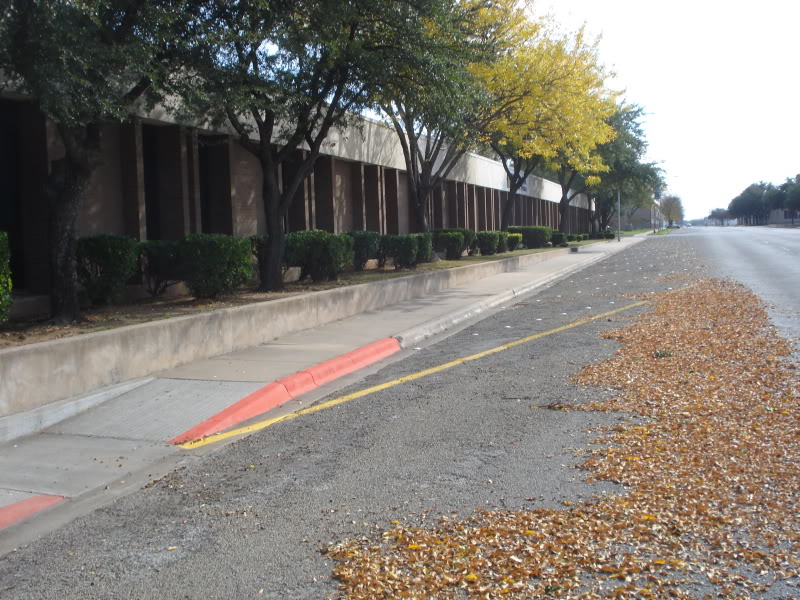
A block away, buildings sit abandoned and broken.
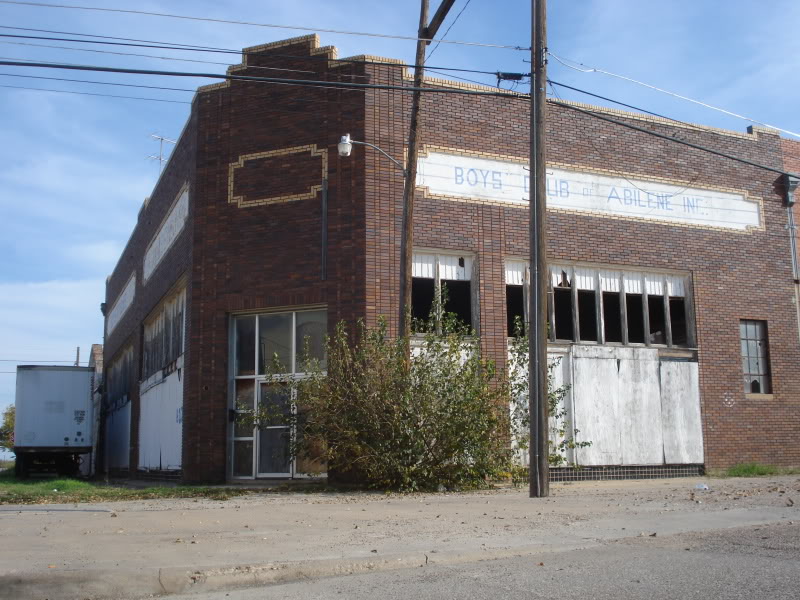
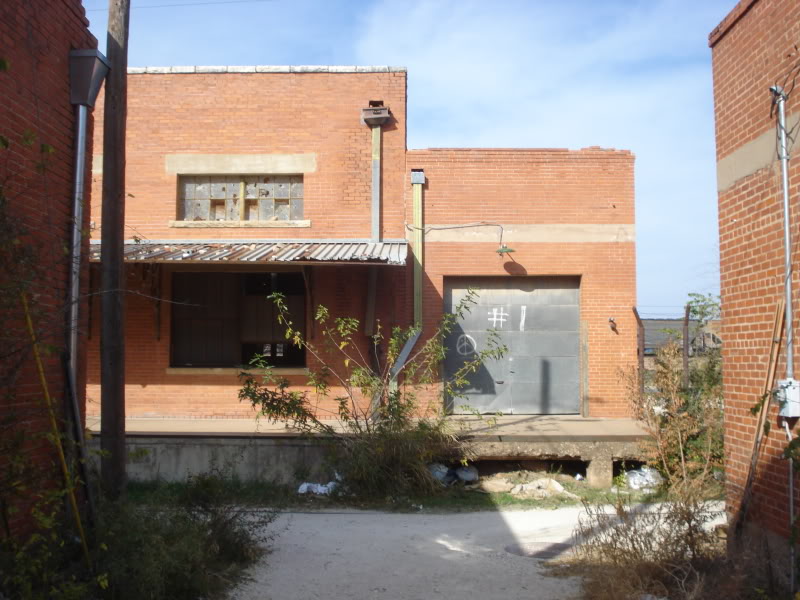
Moving another block east, the sidewalks disappear altogether and the weeds grow taller.
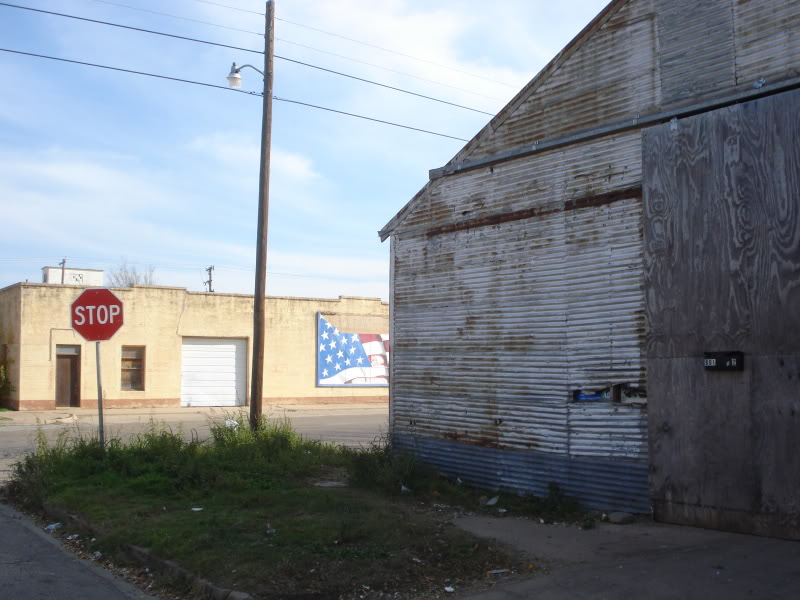
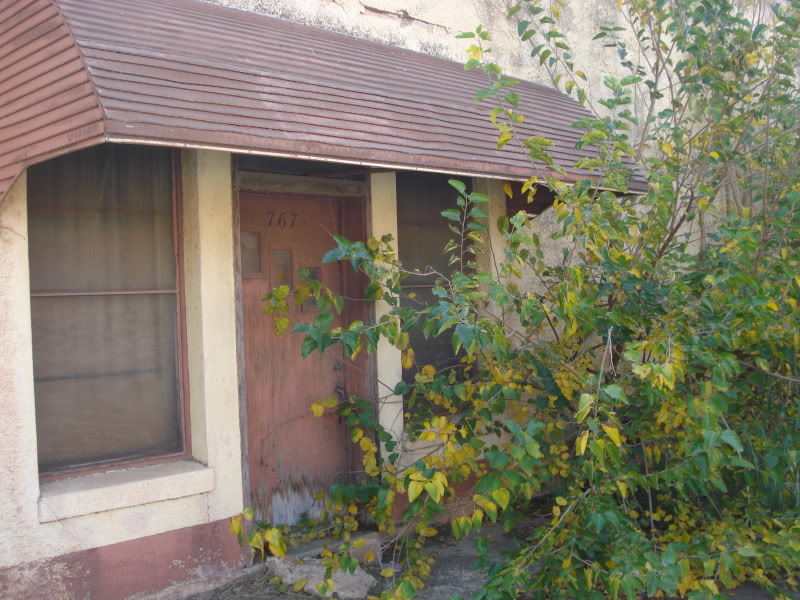
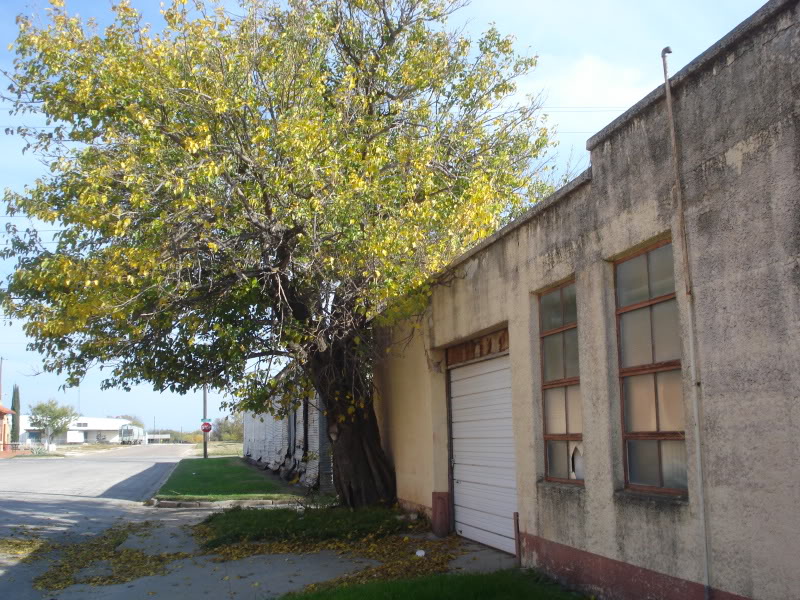
A row of tidy office buildings serve to enhance the Twilight Zone effect offered by the desolate and silent streets.
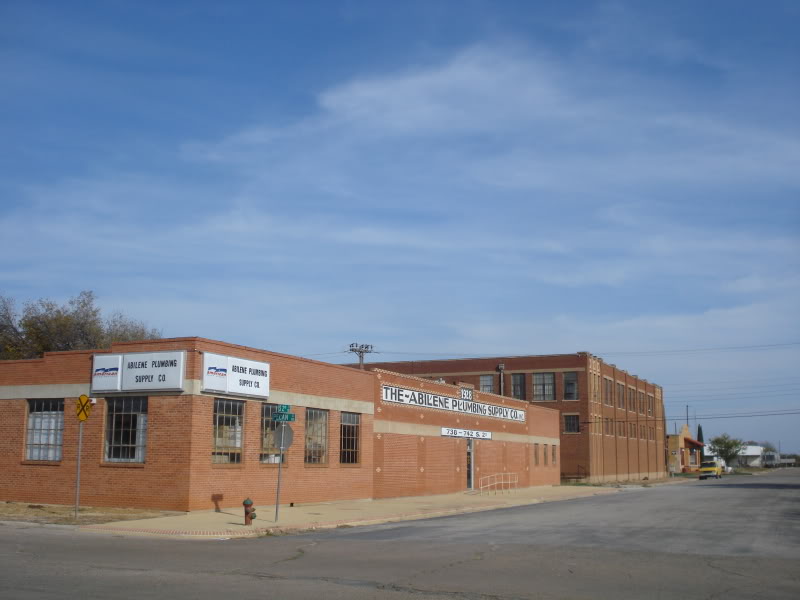
A former warehouse serves as a furniture making business.
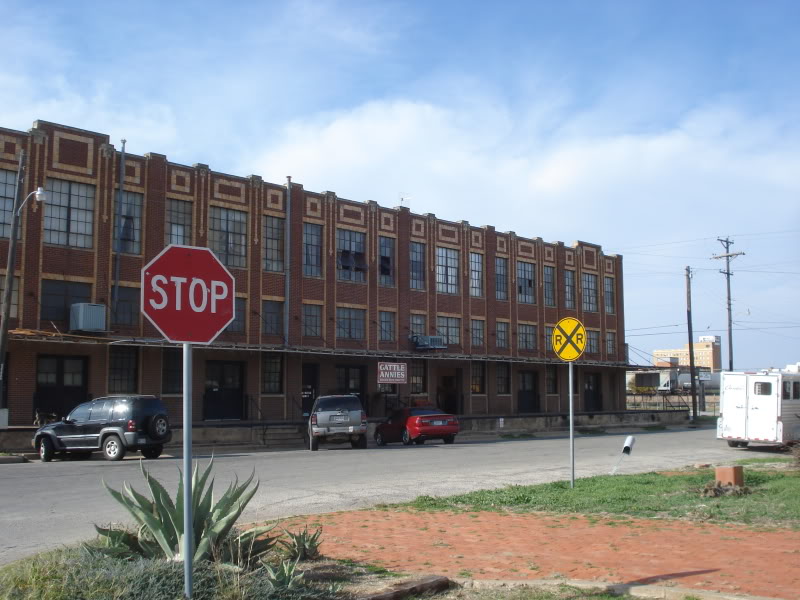
Across the street is the 1929 Abilene & Northern Rail Depot (189 Locust Street). Supposedly, it's going to be converted into a restaurant.
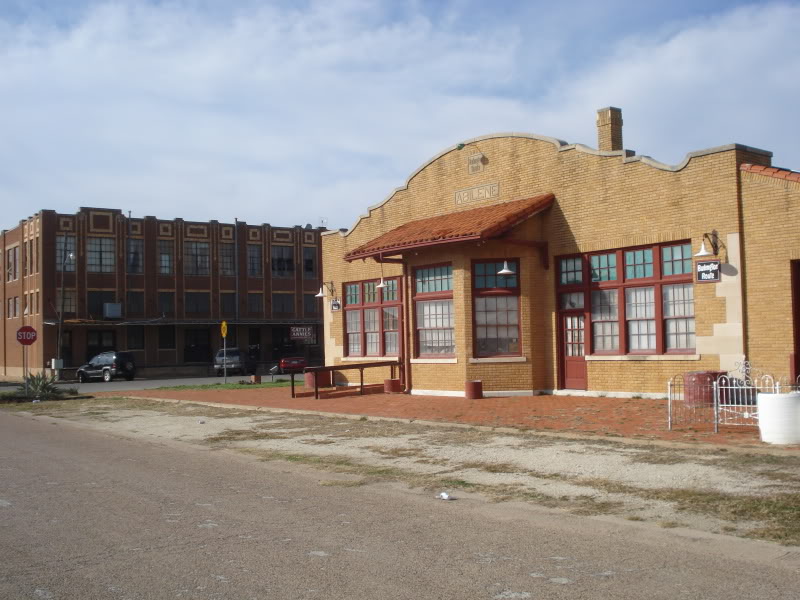
ABILENE & NORTHERN RAILWAY
ABILENE & NORTHERN RAILWAY. The Abilene and Northern Railway Company was fostered by Edward S. Hughes
and his associate D. T. Bomar, who had been one of the promoters of the
Wichita Valley Railway. On February 5, 1906, they obtained a charter to
build from Hamlin southeastward to Brady, with a branch from a point
near Anson to Stamford, the terminus of the Wichita Valley line. The
construction contract was given to the Fidelity Construction Company of
Wichita Falls, which in 1907 built the thirty-nine miles from Stamford
via Anson to Abilene. The Abilene and Northern was open for service on
January 1, 1907. The capital was $200,000, and the business office was
at Abilene. Members of the first board of directors included C. H. Steel
of Anson, R. L. Penick of Stamford, Bomar of Fort Worth, and Hughes, William G. Swenson, Henry James, H. O. Wooten, A. Holt, and George L. Paxton, all of Abilene.
By February 1908 the company had sold its securities to the Colorado
and Southern Railway, another backer of the project. Though the road
received no state funds, financial backing from people in Abilene,
Anson, and Stamford and landowners along the line amounted to
$86,805.85. No more track was built, and the Abilene and Northern was
leased for operation to another Colorado and Southern subsidiary, the
Wichita Valley Railway Company. The Abilene and Northern formed the
south end of a through route between Wichita Falls and Abilene. The
company was merged into the Fort Worth and Denver in June 1952. H. Allen Anderson
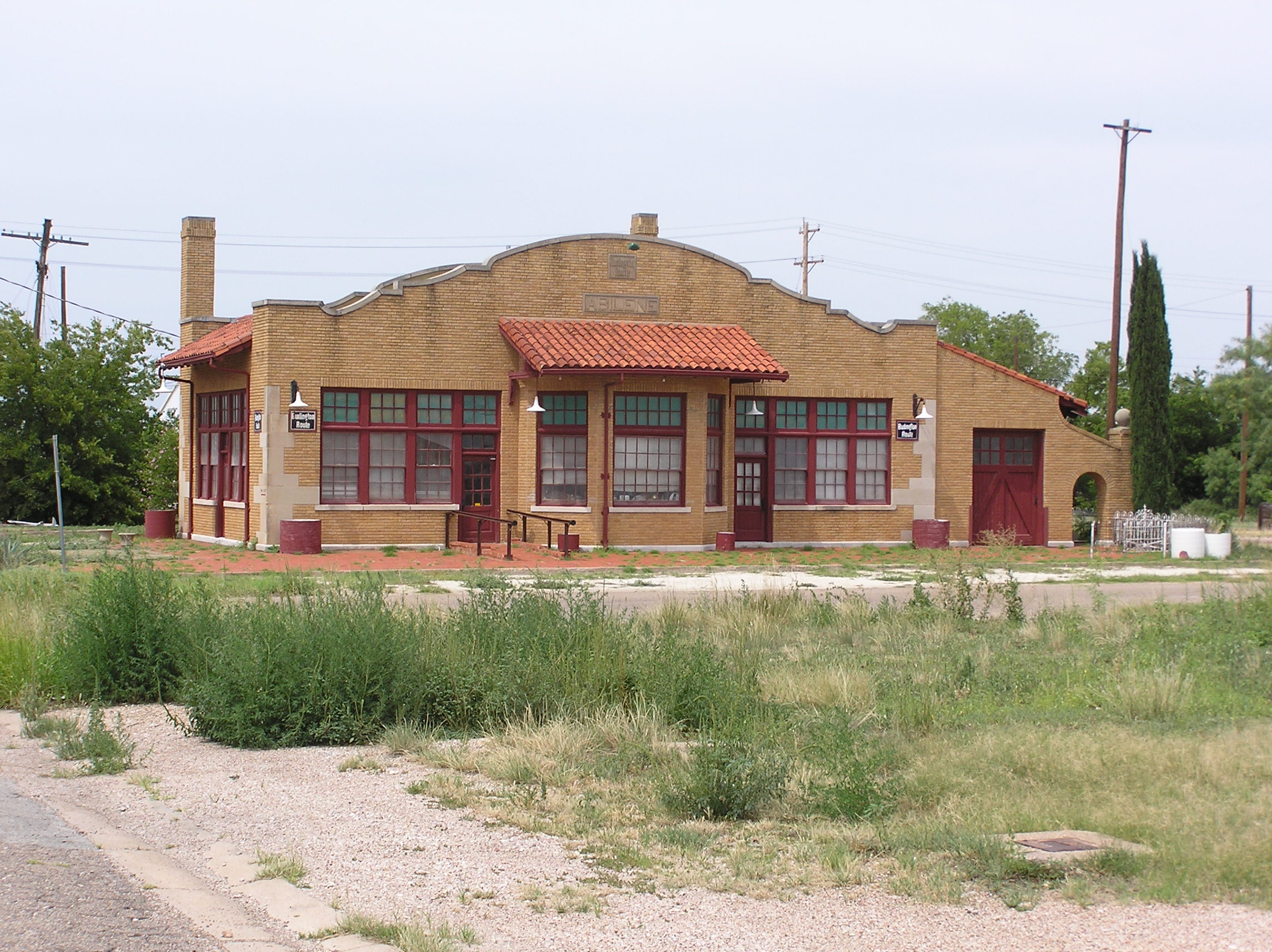
Across the road from that, to the south, is a 90+ year old grain mill.
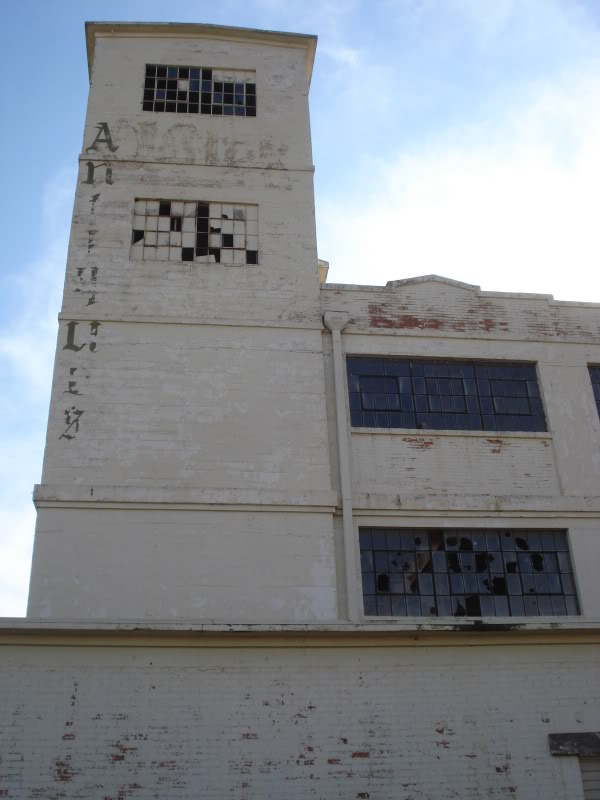
Once a bustling business, it left its good ol' days long behind.
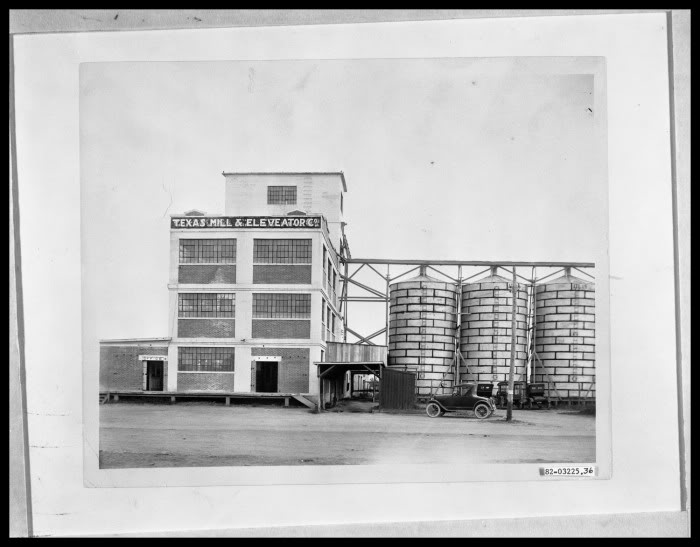
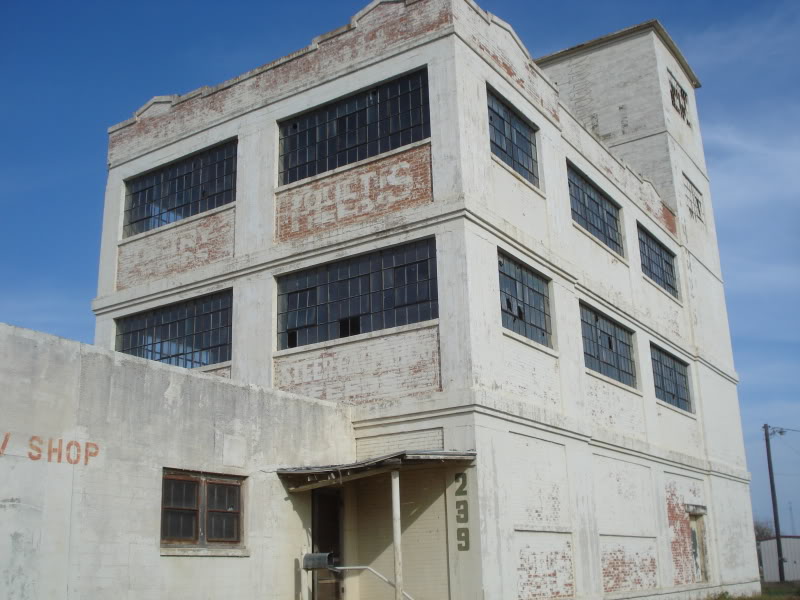
North downtown peeks over at us.
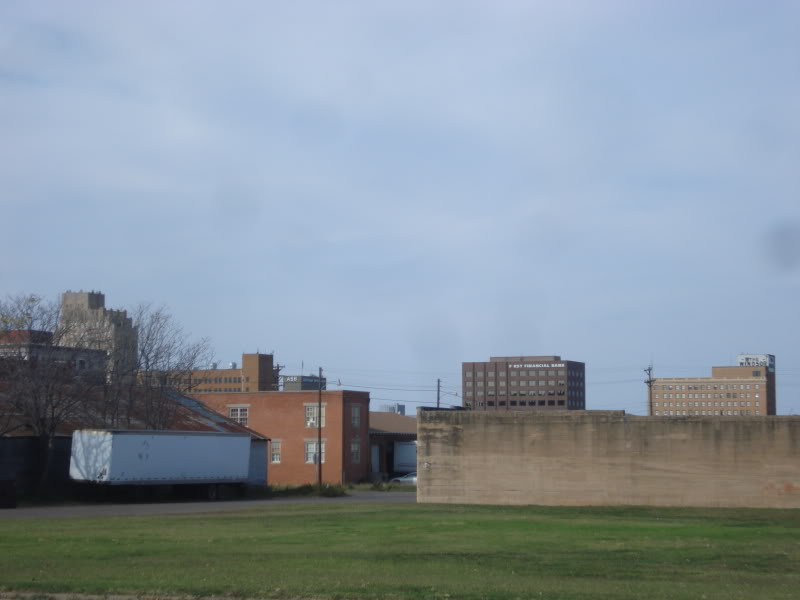
The back side of the 1914 Courthouse.
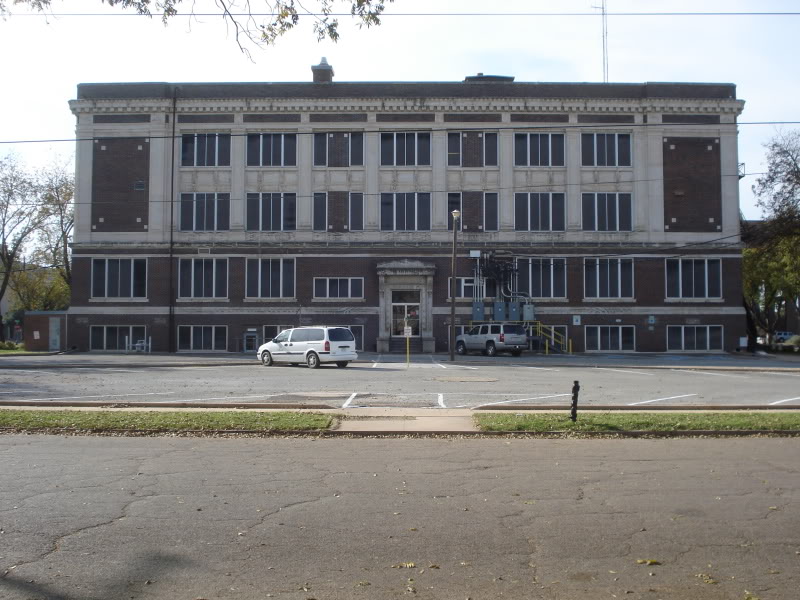
At left, the 1938 Agriculture Dept building, now home to Welfare (built
by the Works Progress Admin). At right is the former county jail, an art
deco gem encased in 60s white brick.
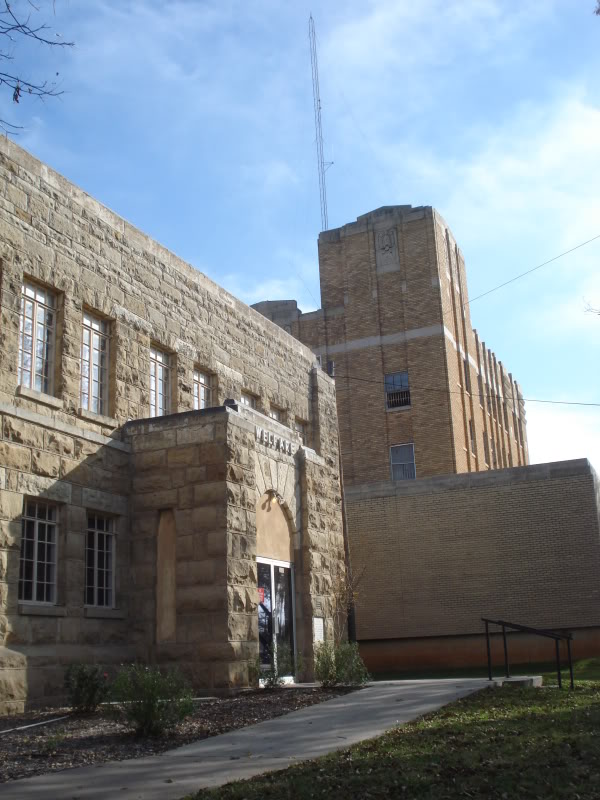
The Taylor County Law Enforcement HQ, built on the site of a long-closed Thornton's Department Store.
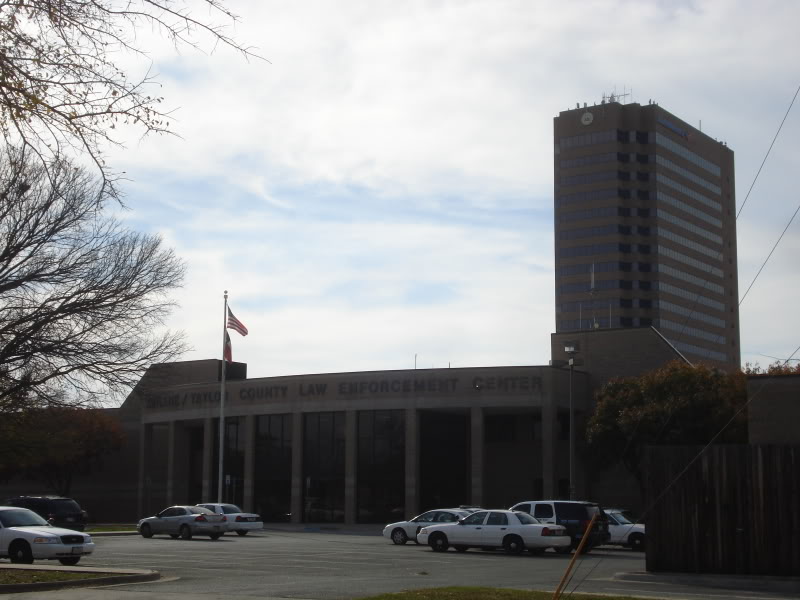
Taylor County Plaza, built in the 1960s as a bank, is home to many
county offices. Hideous and in dire need of renovations, I can't say it
is anything but an eyesore at the present time.
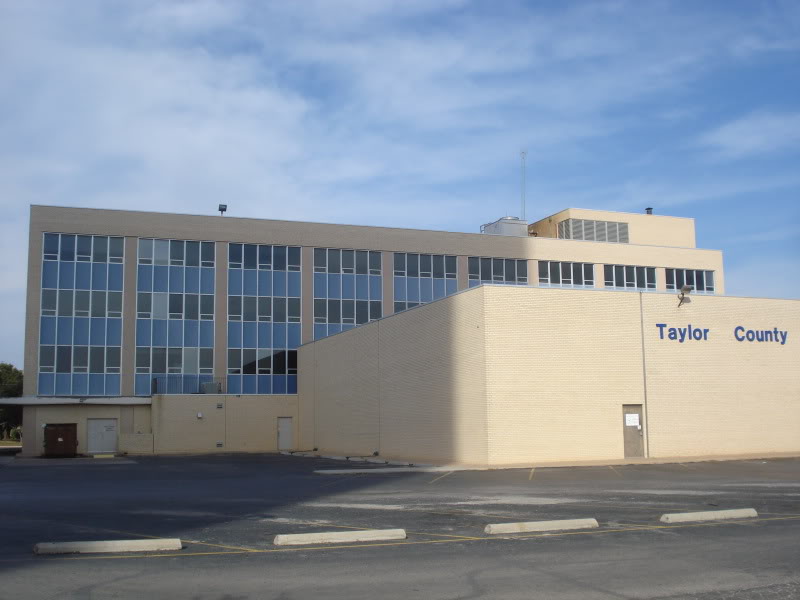
[Thornton's "A City Within It's Self" before the fire]

[Below is the rebuild Thornton's which was purchased by the County and remodeled into office space]
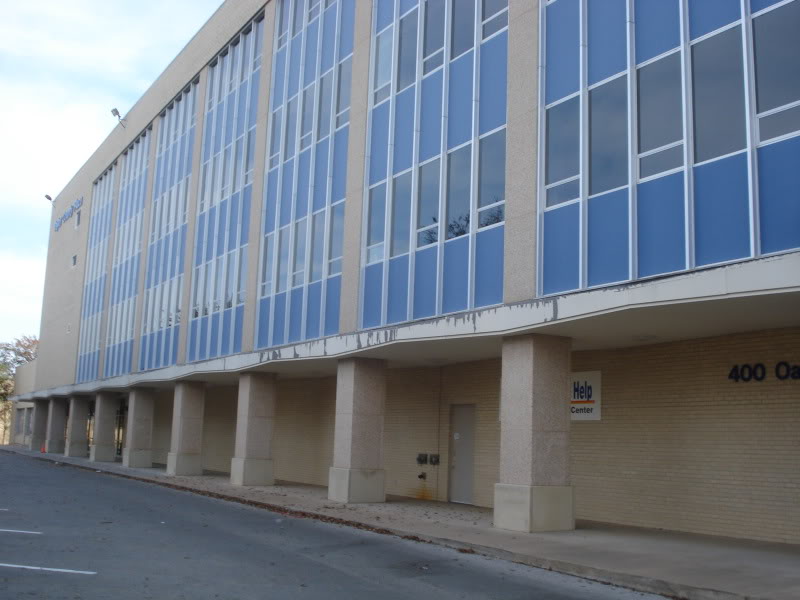
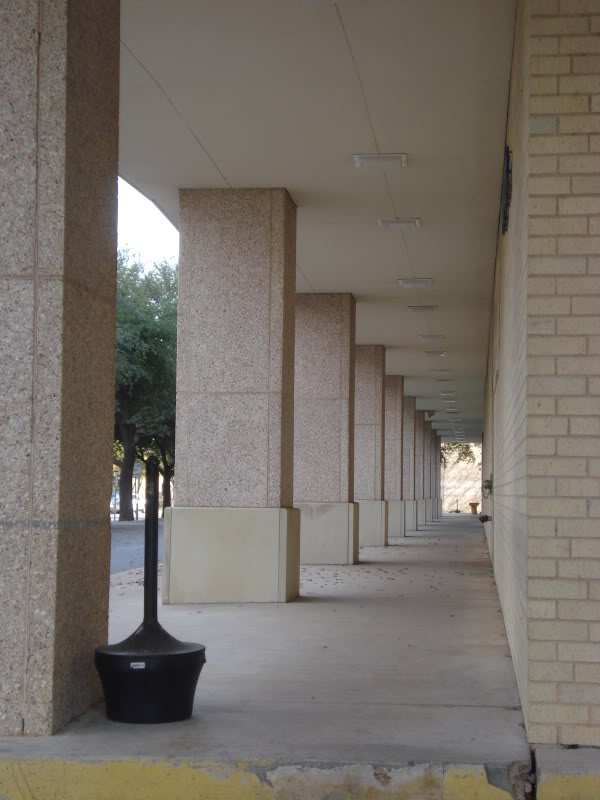
Abilene's tallest building: the 1983 Enterprise Building (300 feet).
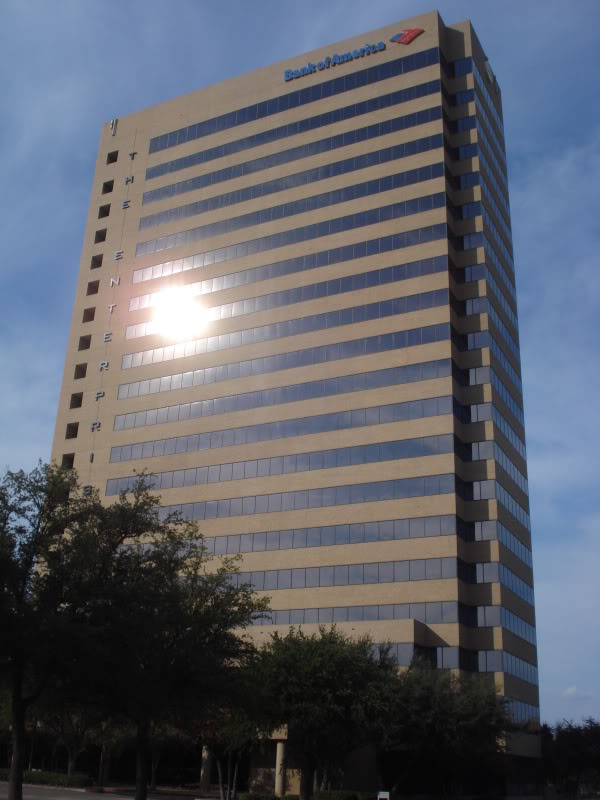
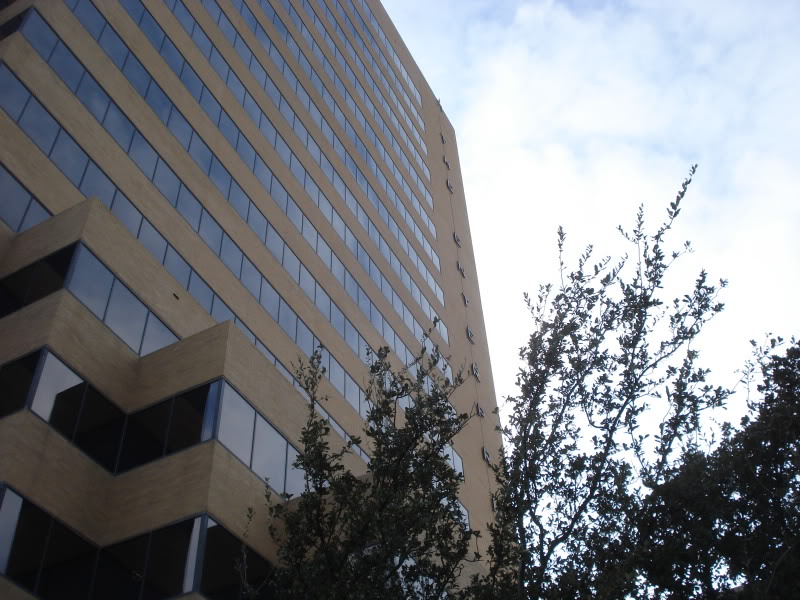
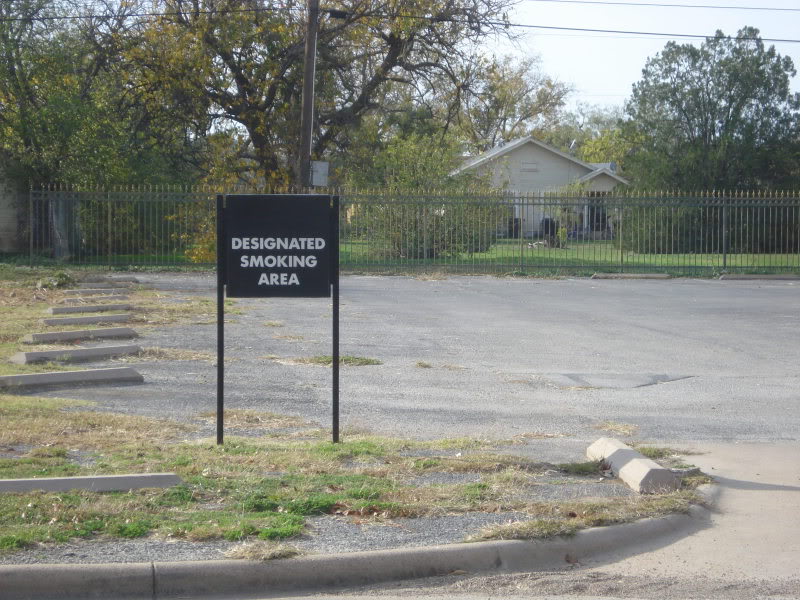
The 1930 Wooten Tower looking over the tracks at me.
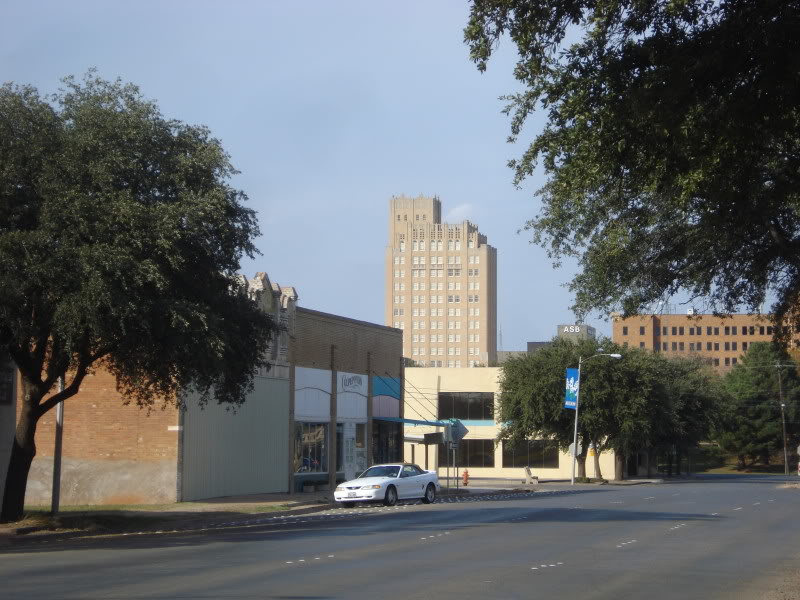
A row of lawyers' offices.
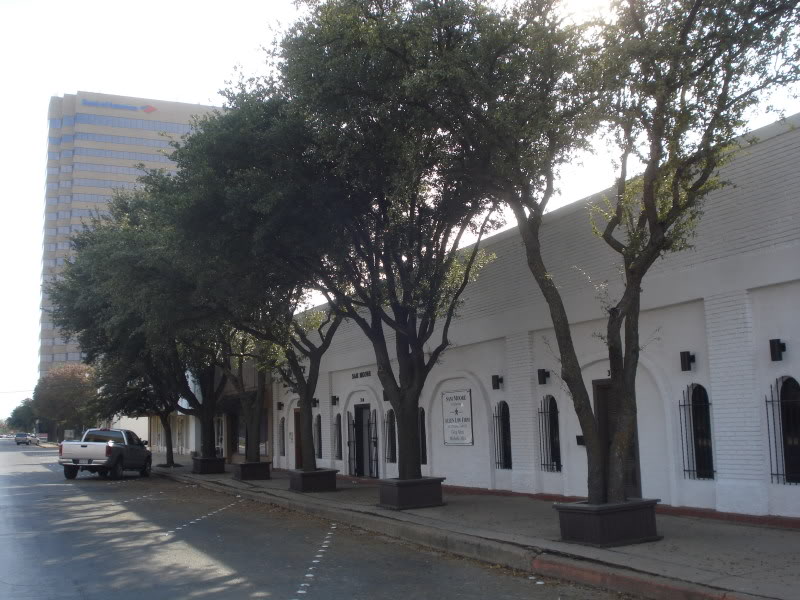
An odd place for lunch.
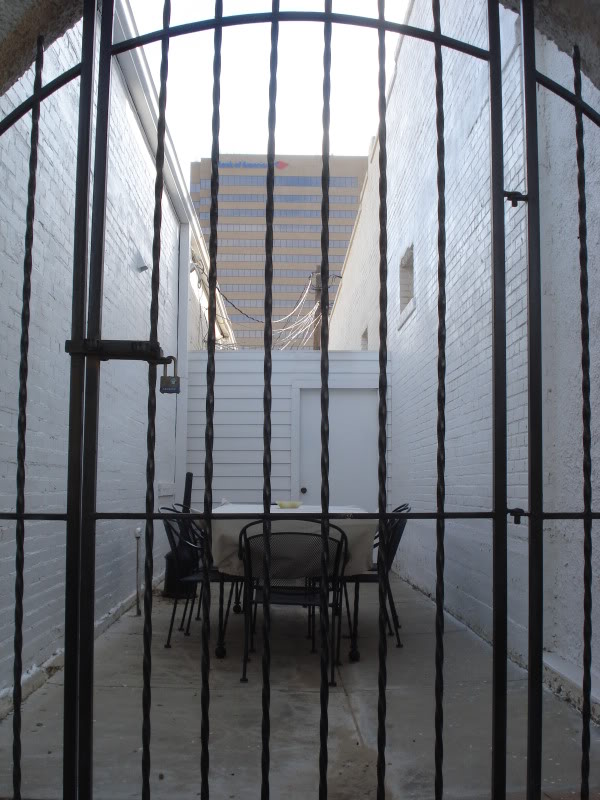
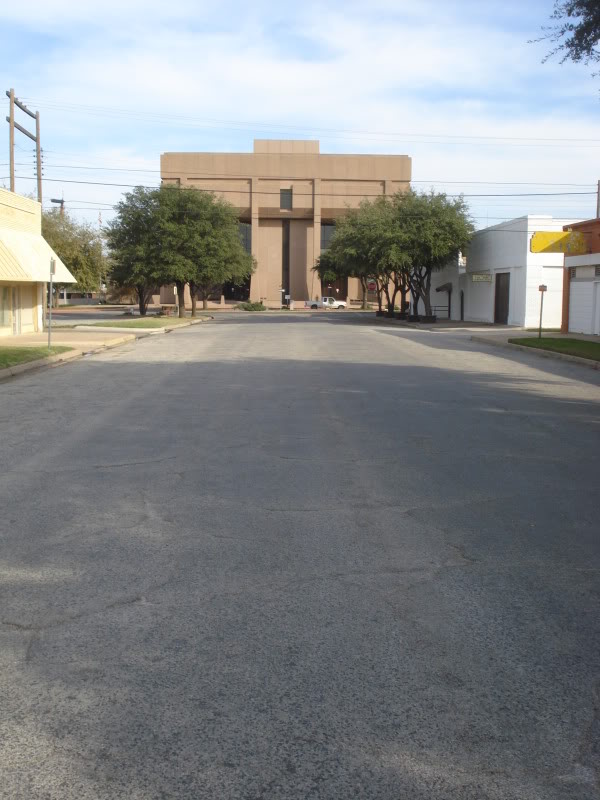
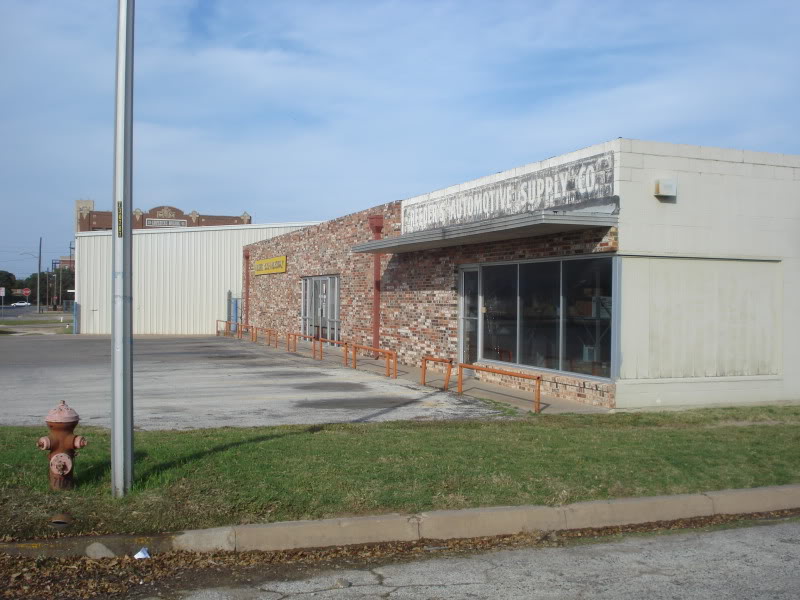
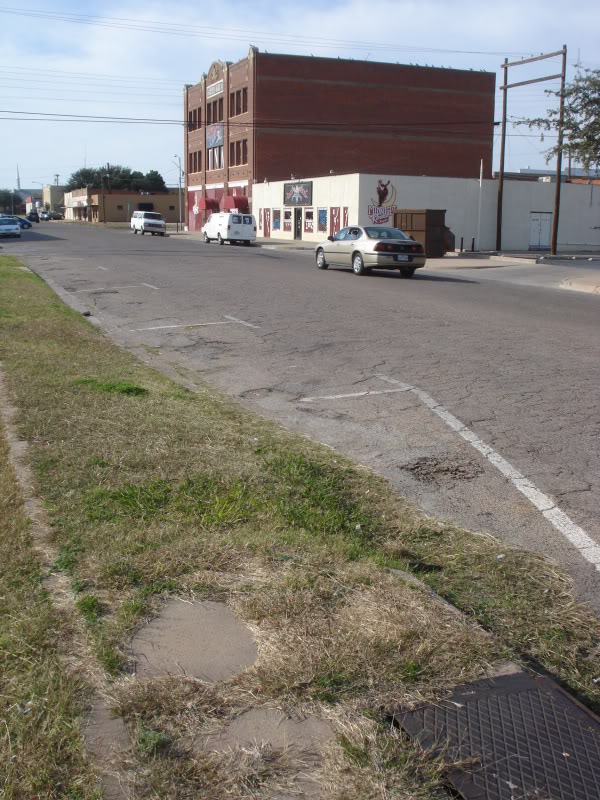
A beautiful building currently playing host to a less-than-reputable club.
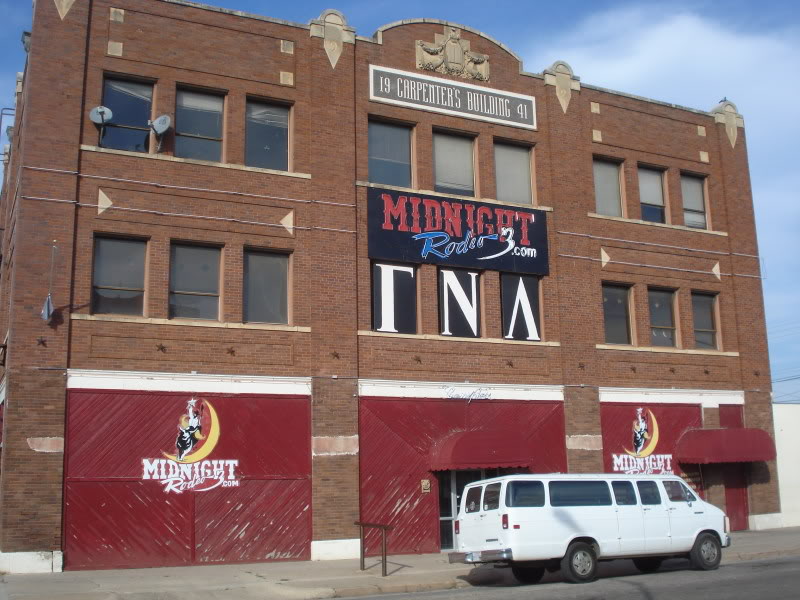
[This was the Carpenter's Local Union Hall dances were held for many
years on the 3rd flood which is open-span. So, the buildings new
purpose was not a "stretch"]
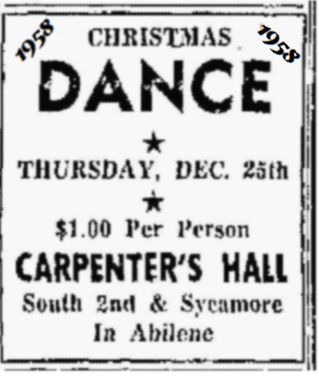
Moving across the tracks to the north side, you'll find the restored
portion of downtown. Its crown jewel is the 1930 Paramount Theater. It
was saved from the wrecking ball in the 1980s and spurred the revival of
the rest of the neighborhood.
(The Theater in 1930)
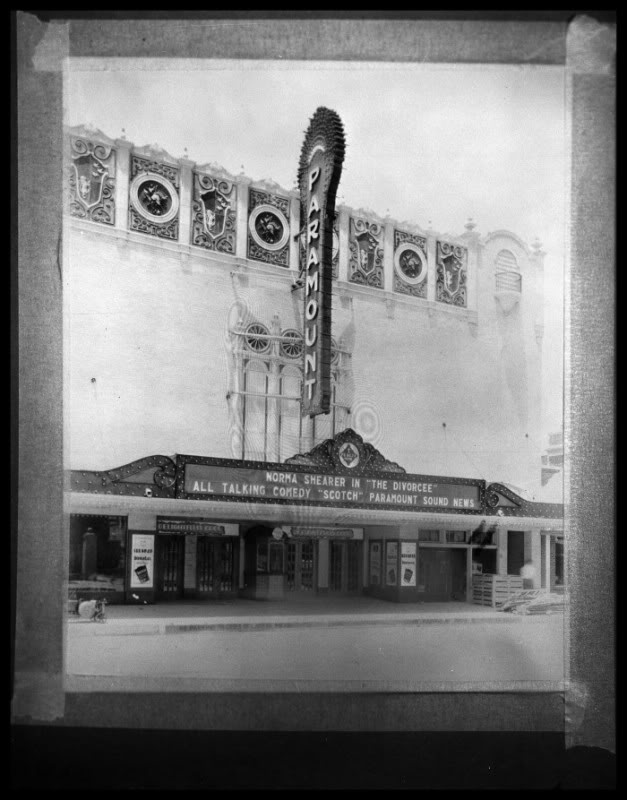
(And today)
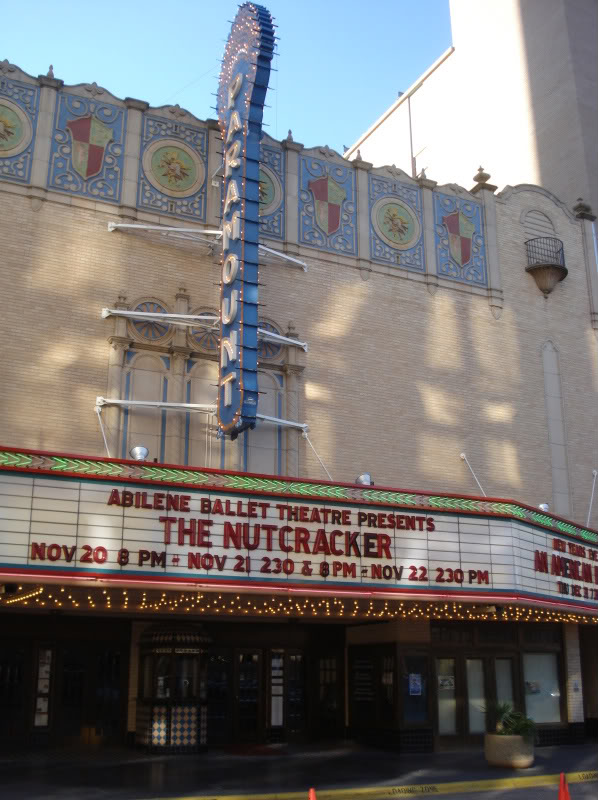
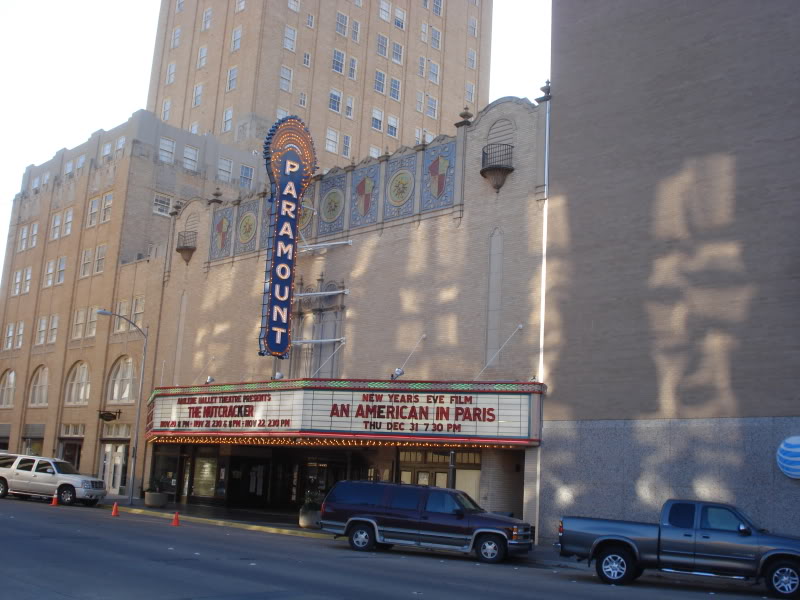
Grissom's Department Store, an Abilene favorite for decades, is now home
to the Center for Contemporary Arts (and a new brick face).
(In 1955)
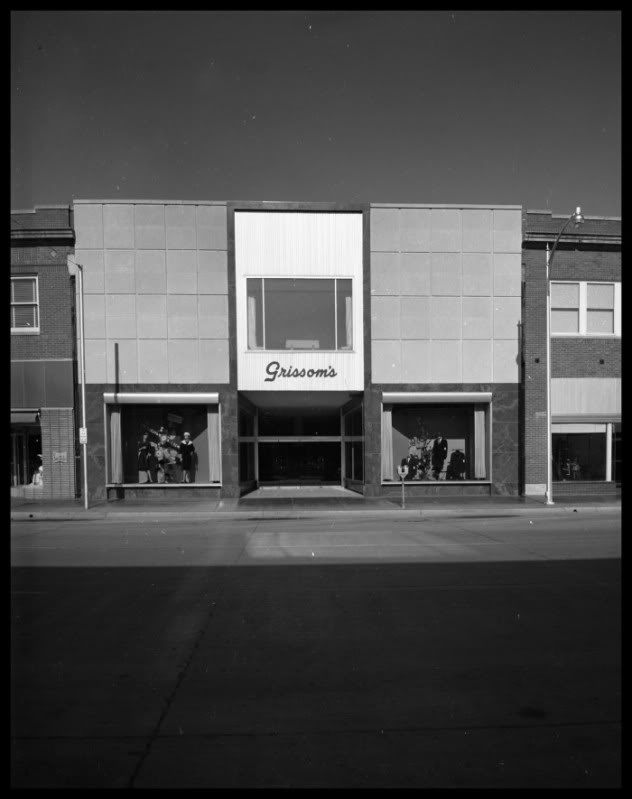
(Today)
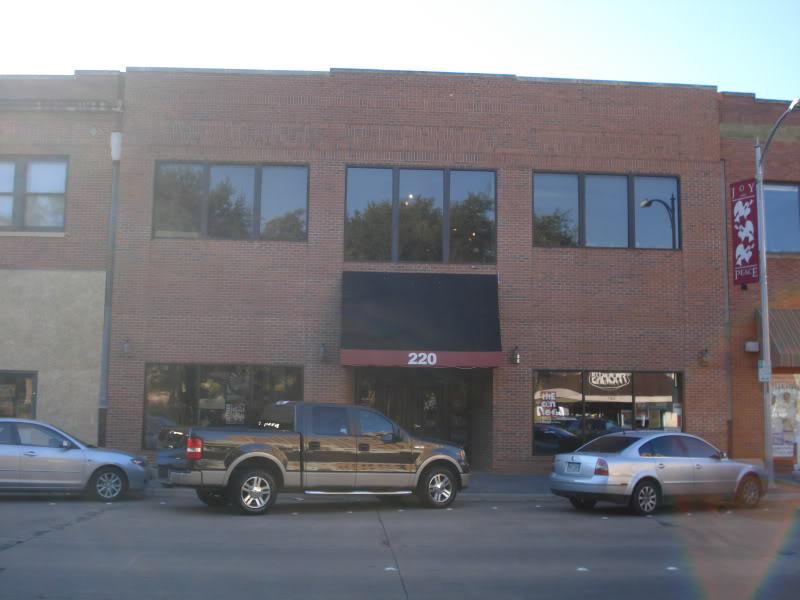
Busch Jewelers, another longtime Abilene resident, built this oddly
intriguing new store in the 60s. It still stands today with the same
tenant.
(In abt 1970)
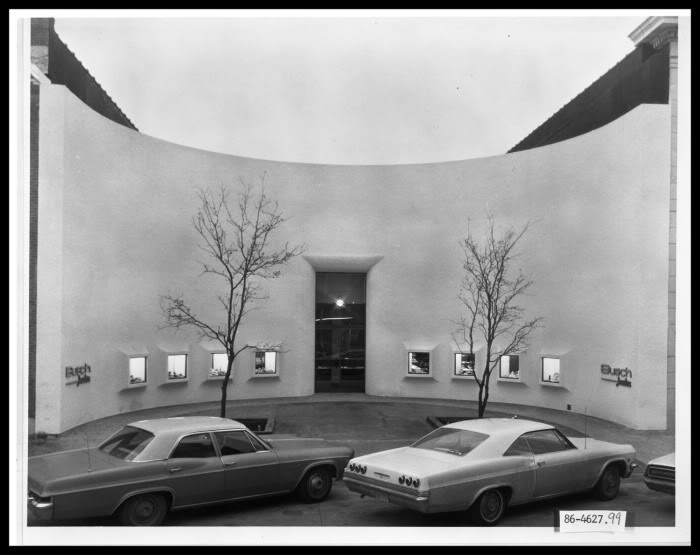
(Today)
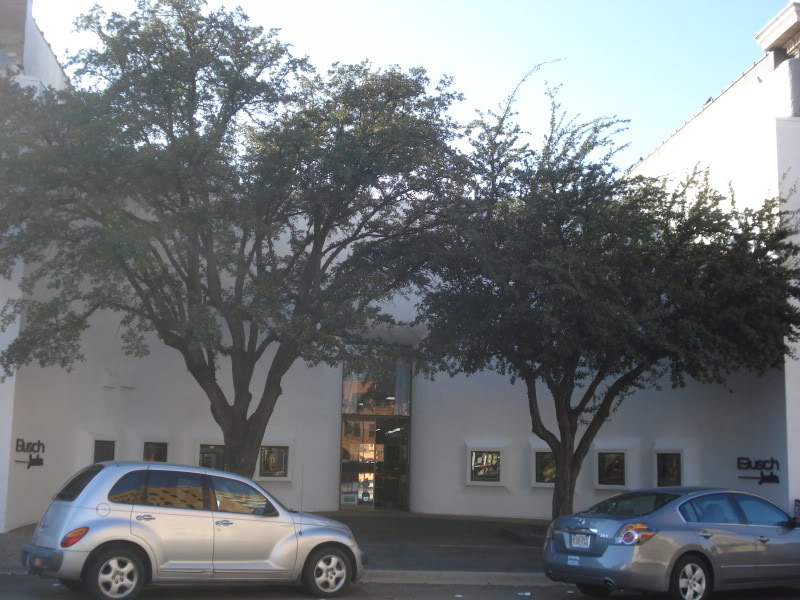
McKay's Bakery (a local favorite) and O'Kelly Office Supply.
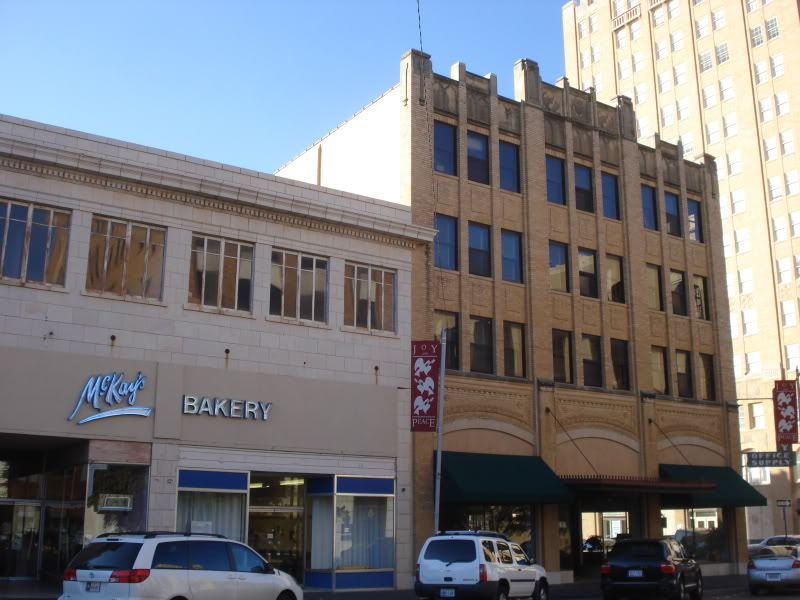
A row of office towers. In the foreground is a parking lot that used to
be a 6-story 1950s bank tower. Is it progress to pave over a highrise? I
don't think so, but hey, I've been wrong before.
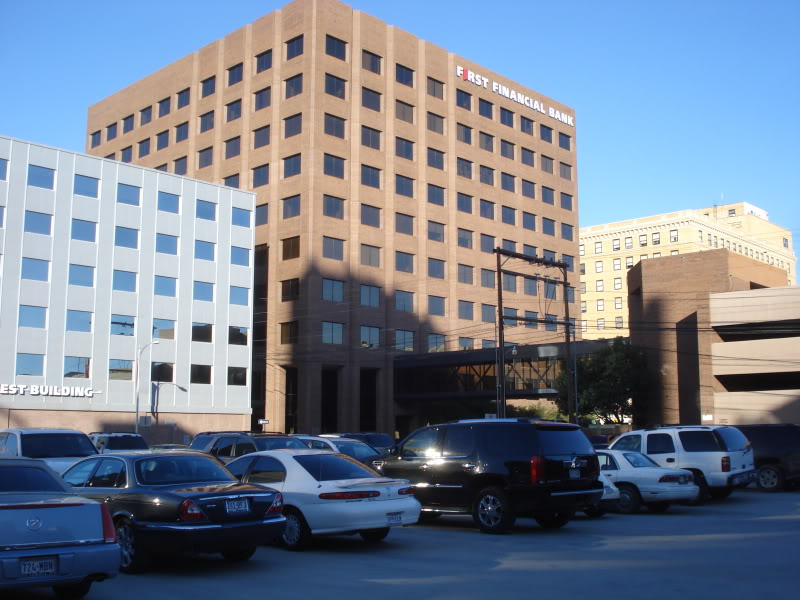
The Citizens Bank building, erected in the 1950s, is now home to
American State Bank and boasts and rather tired-looking black skin.
(Abt 1955)
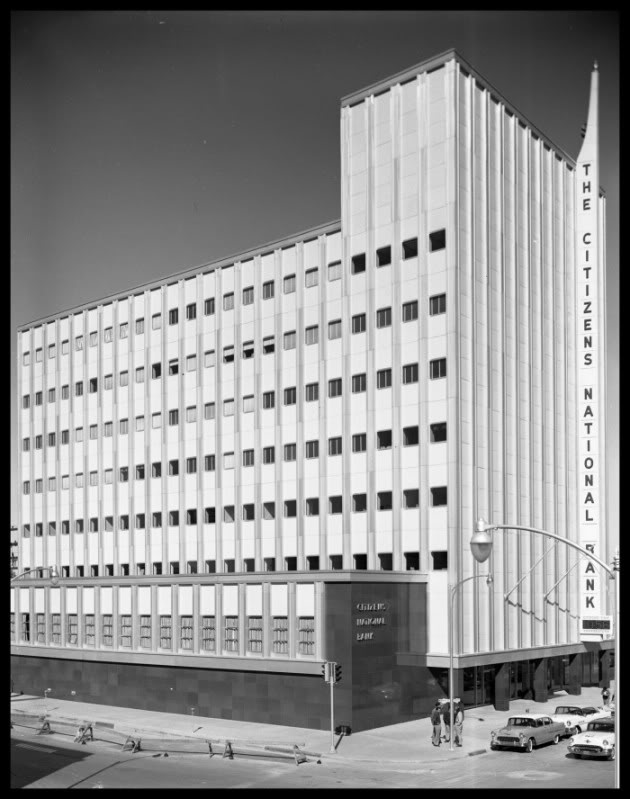
(Today)
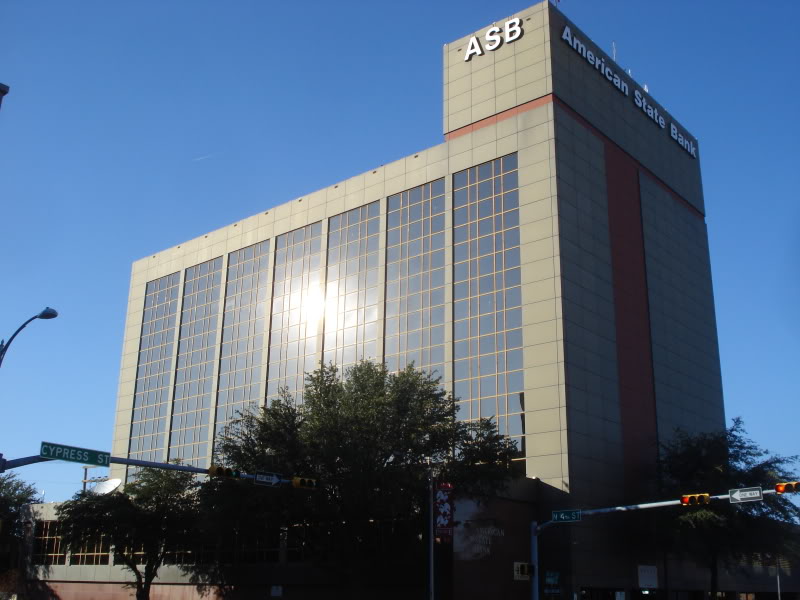
The AT&T building. It was built in the 30s, but now I can only guess at what it once looked like.
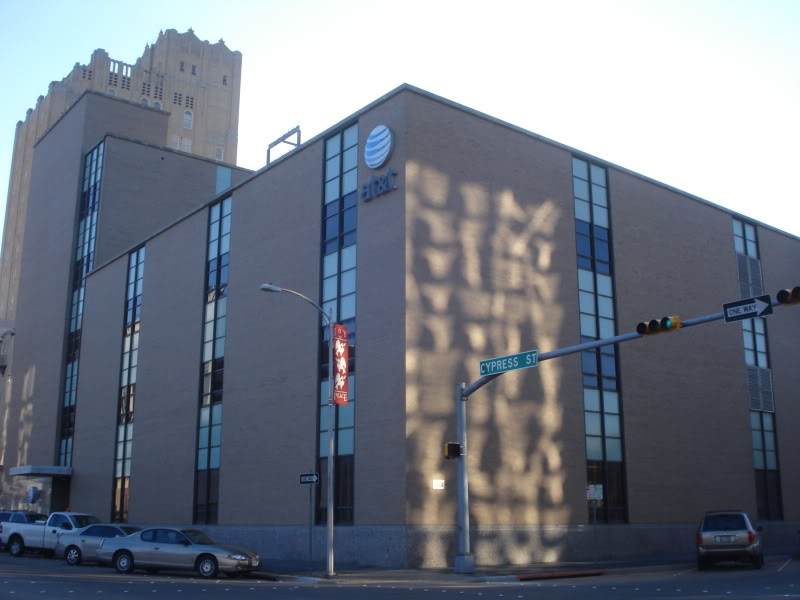
First Financial Bank's west tower.
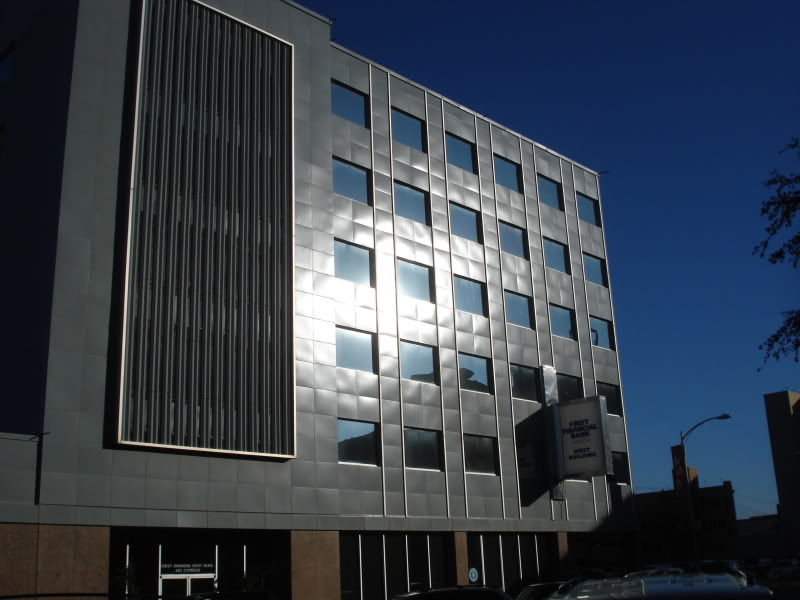
Behind it stands the much larger east tower, built in 1984.
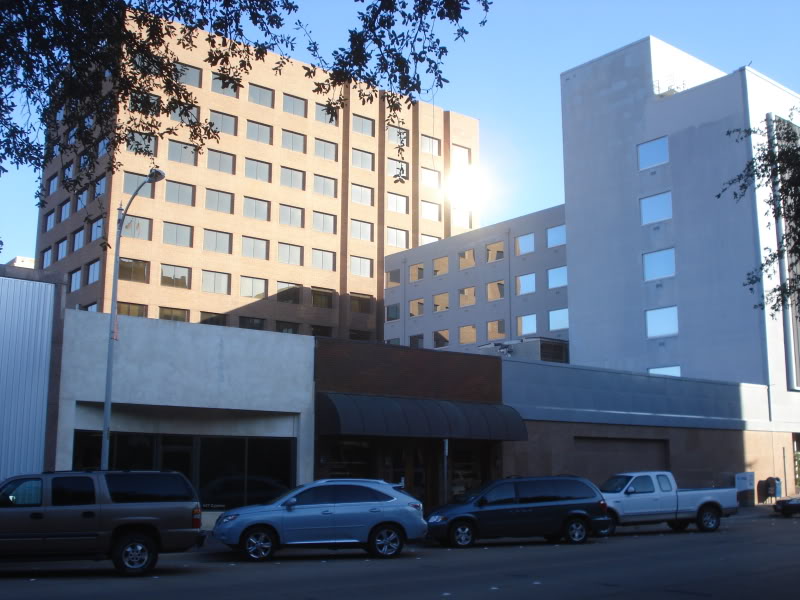
American State Bank's row of storefronts along Cypress. Mostly offices and jewelers now.
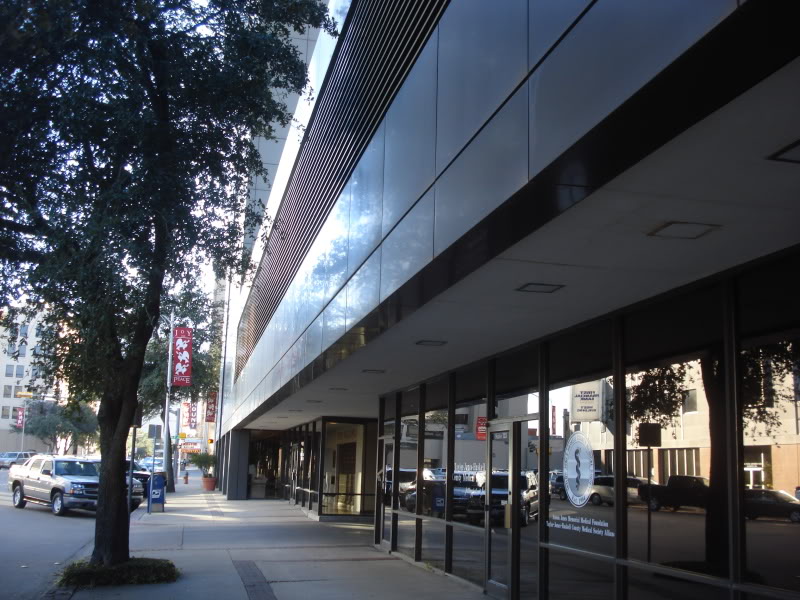
Downtown is filled with examples of architecture gone bad. This former
pharmacy at 1052 North 5th was horrendously reclad some time in the 60s.
(In 1956)
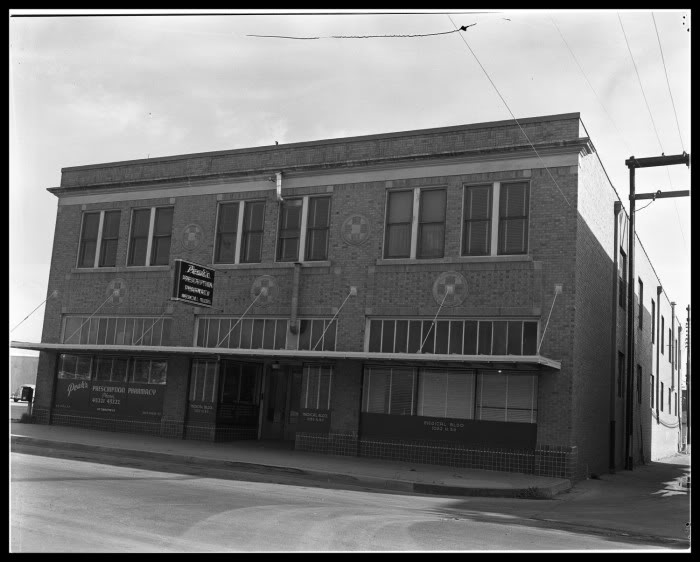
(Today)
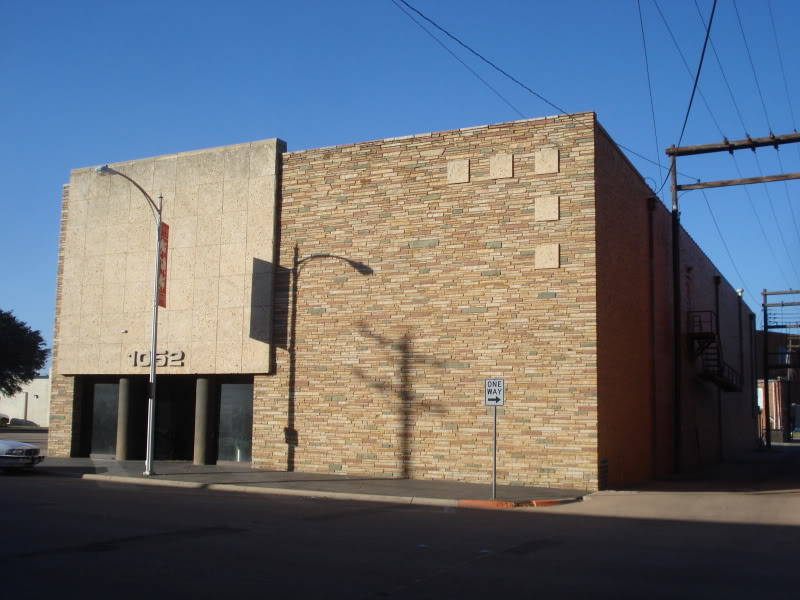
First Financial Center's plaza with the old Hilton catching the sun.
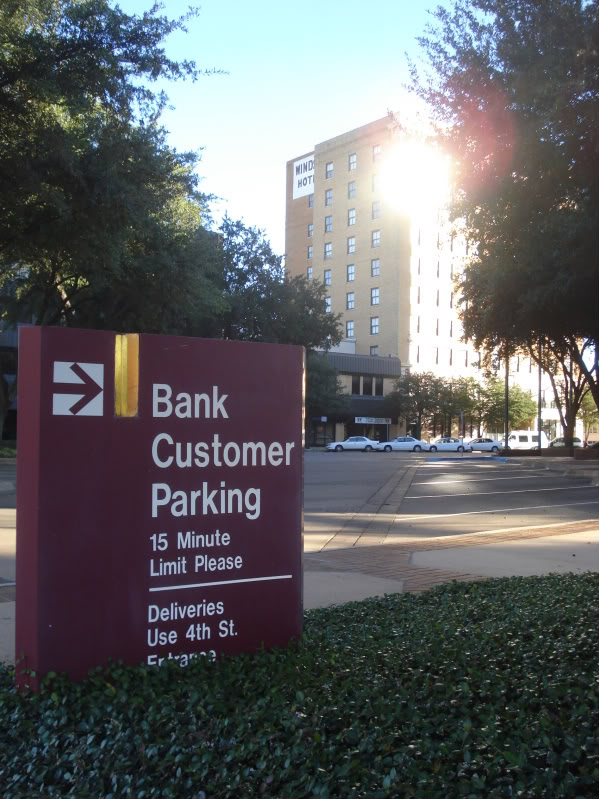
Looking south on Pine Street in 1955:
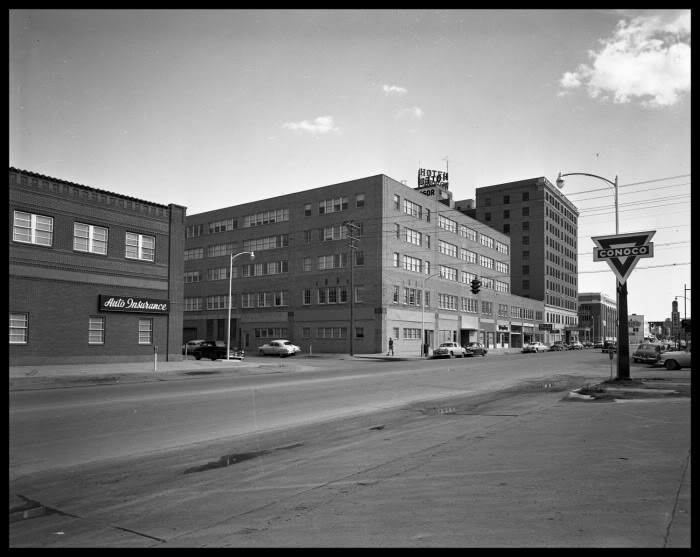
And from the same spot in 2009.
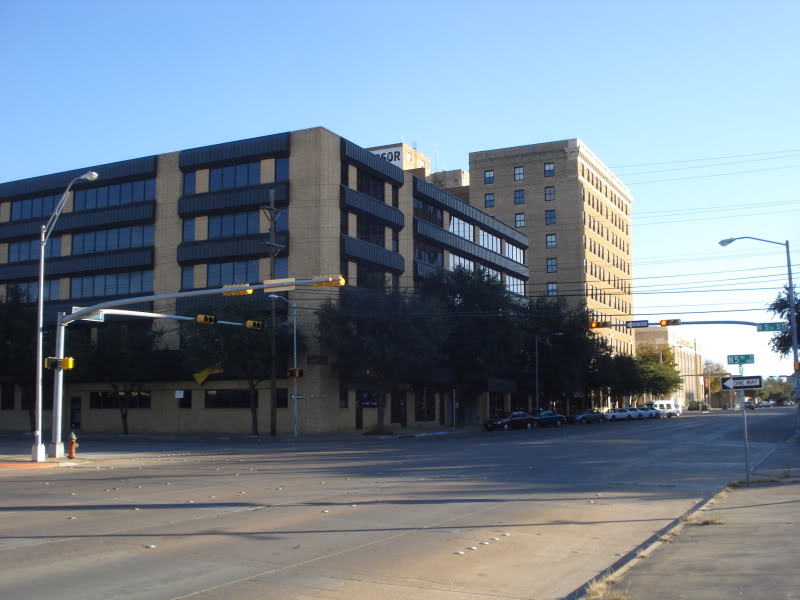
The Windsor Hotel was originally built in the late 1920s by the Abilene
Hotel Company. Needing someone to manage it, they recruited a hotelier
from nearby Cisco, Texas to run the joint. He agreed on one condition:
that the hotel bear his name. Conrad Hilton got his way, and in 1929,
this opened as the world's first Hilton Hotel.
(Abt 1950)
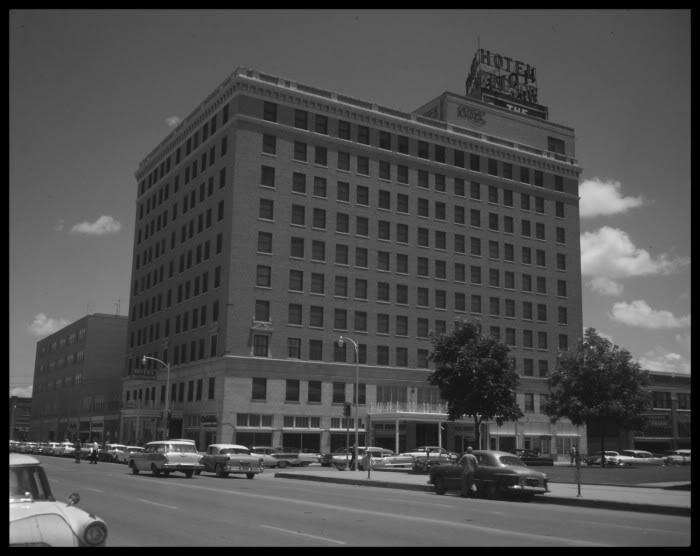
(Today)
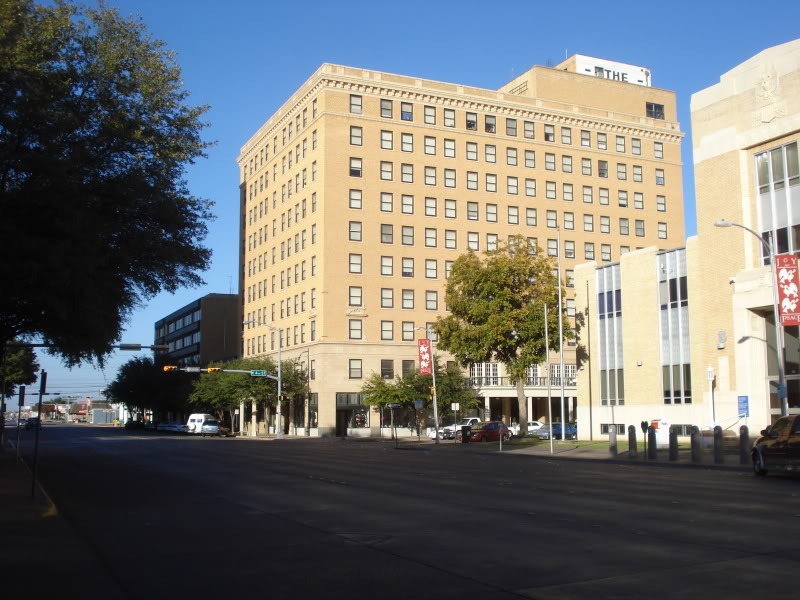
The 1930s Federal Post Office and Courthouse. It replaced a turn-of-the century predecessor located at the same site.
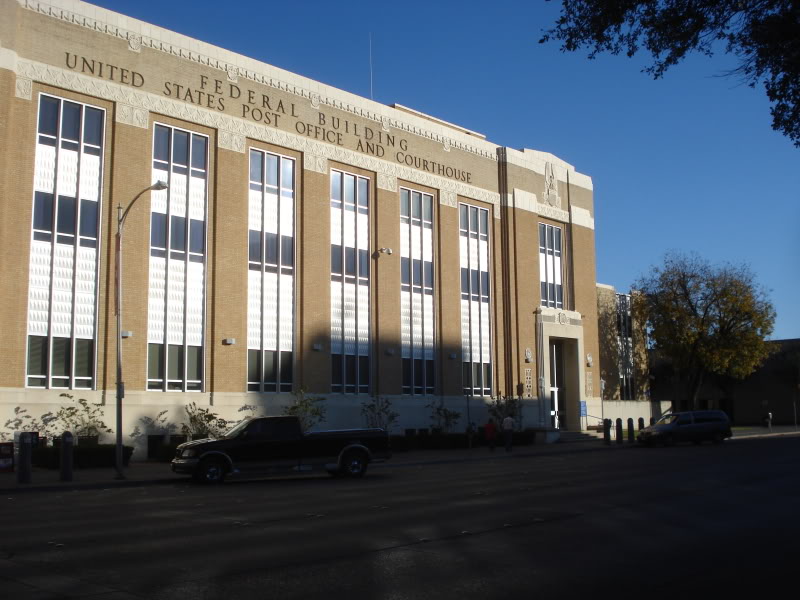
Abilene tried to modernize in the 1970s, building an enclosed shopping
mall on Pine Street called One City Center. Ultimately, it didn't last
long, as the much larger Mall of Abilene opened on the city's far south
side in 1979. One City Center fell into a horrible state of repair and
was a common target for vandals and vagrants until the building was
gifted to Abilene Independent School District in 2005. Today, it houses
all administrative offices and special programs as well as the board
room.
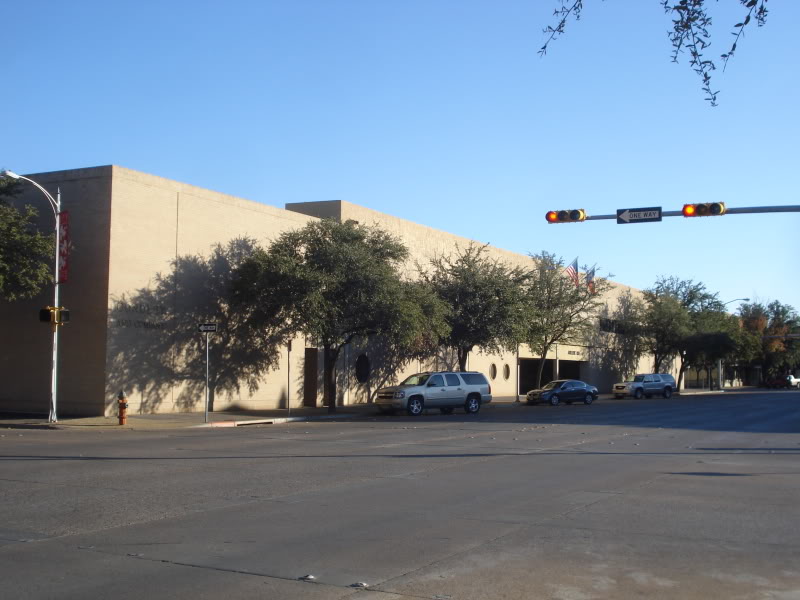
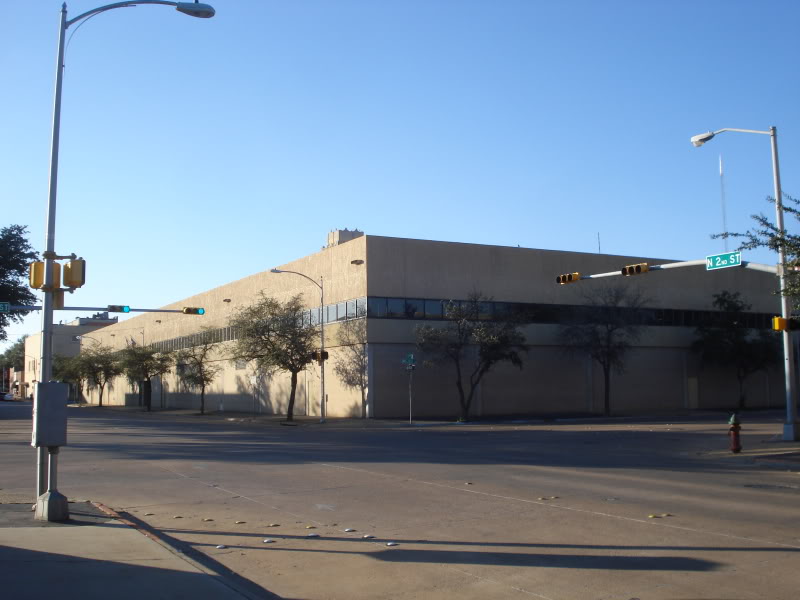
Pine Street was home to a slew of department stores and other shops.
Below is a photo from the 50s showing Grant Department Store, Walgreens,
JCPenney and Sears all in a row.
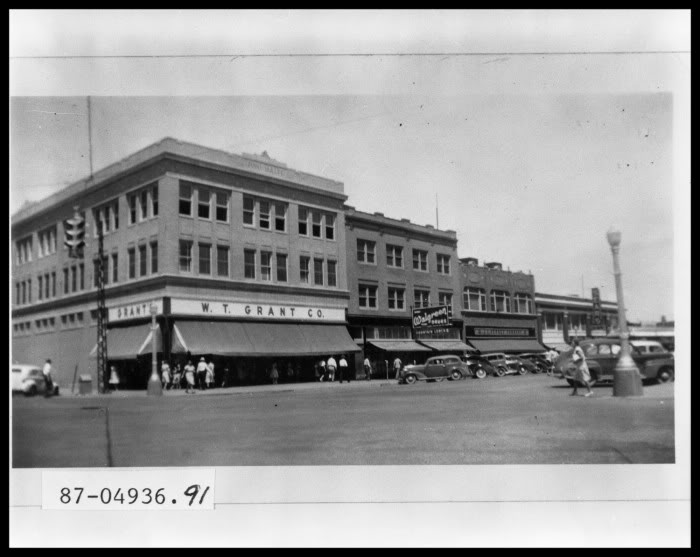
Most of the buildings made way for a parking garage in the 60s (replaced
by yet another parking garage in the 1980s), but the Grant Building
still stands. Today it is home to Texas Tech's school for higher
education as well as AISD's New Tech High School for Engineering, Math
and Science.
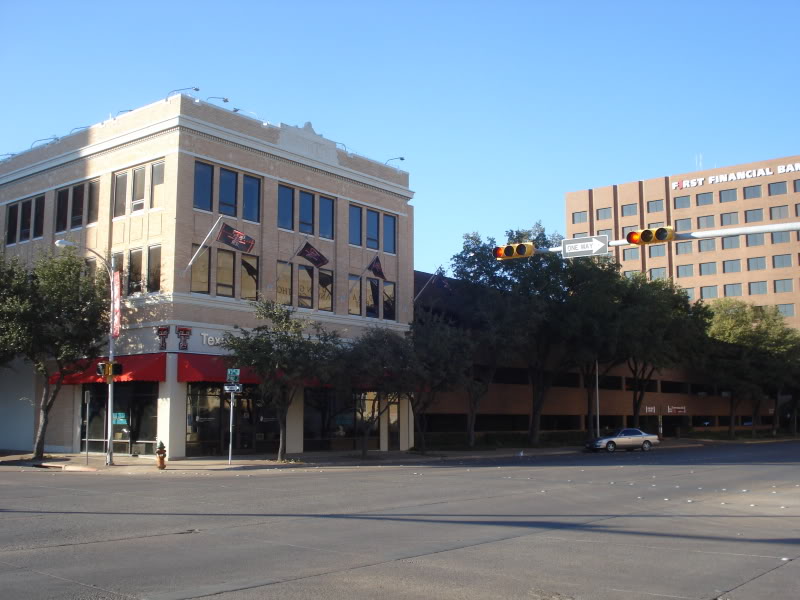
Looking west down North 3rd. The lot in the foreground was once a store.
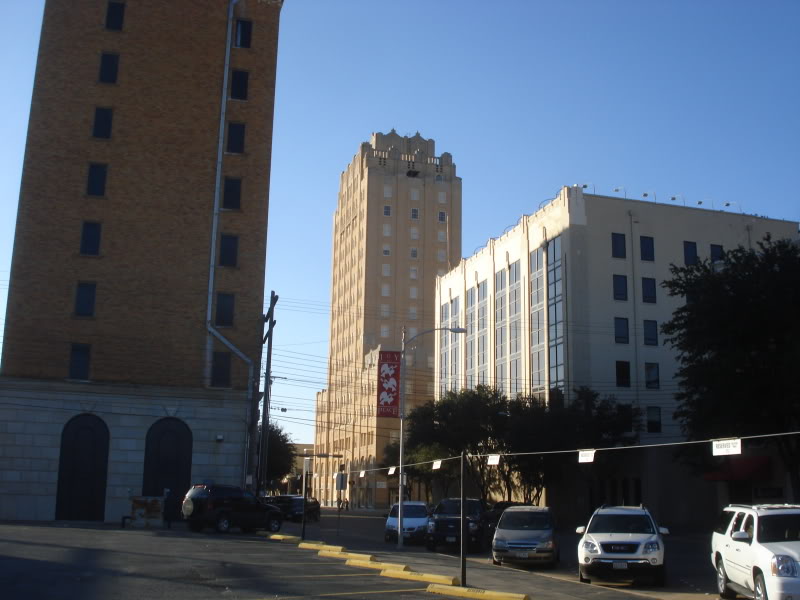
Minter's, yet another Abilene department store, has been transformed
into Under One Roof, a cooperative crafts and gift shop with a
restaurant upstairs. Though it's a bit tired a dirty looking, it's nice
to see it still in use as a store.
(In 1958)
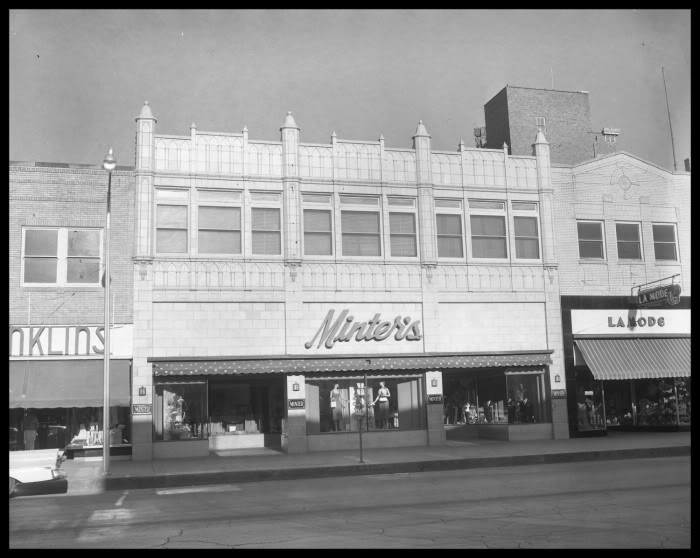
(Today)
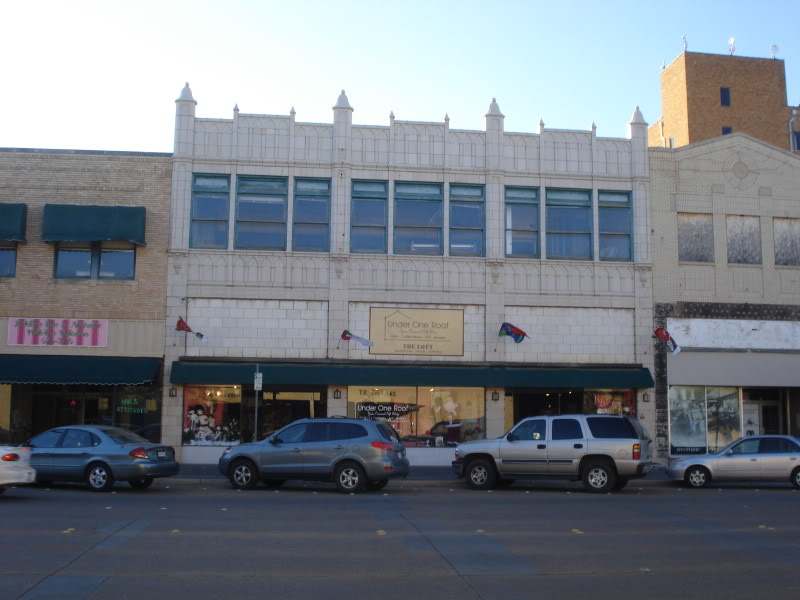
A row of old Pine Street storefronts with the First Financial Center in the background.
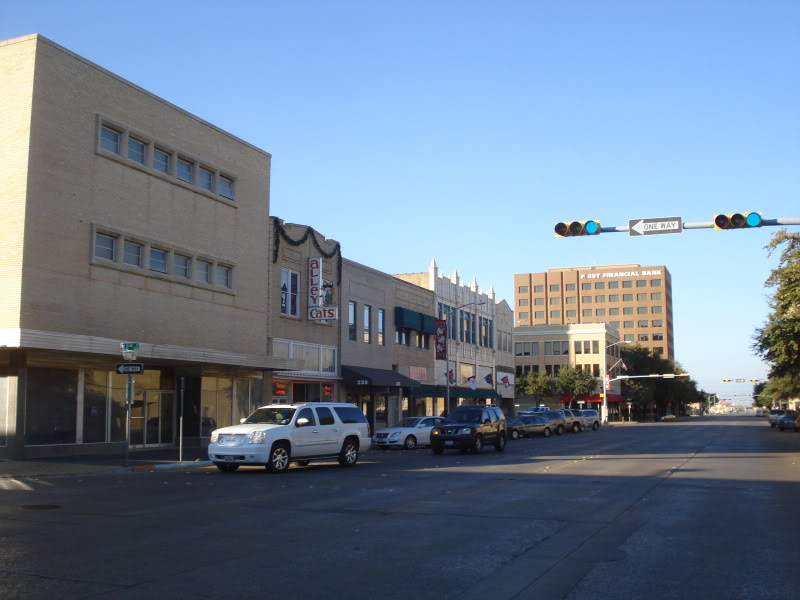
Before building its stark white concave shop on Cypress, Busch Jewelers
was located on the ground floor of the 1928 Alexander Building at First
and Pine.
(On the right)
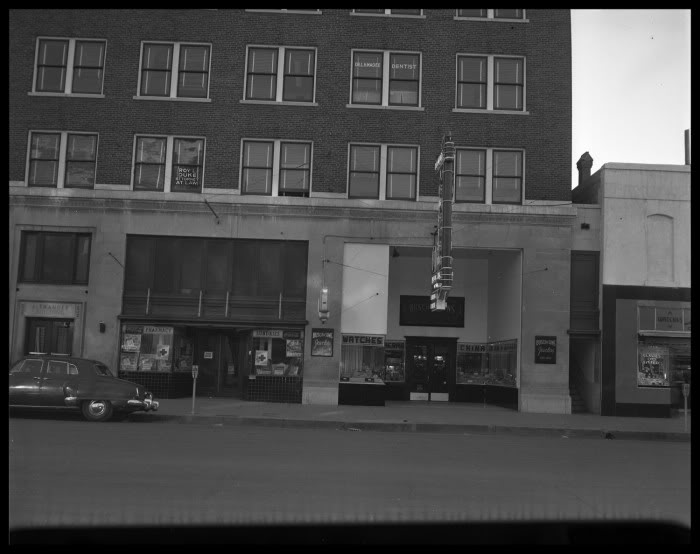
Today, the shop fronts are glassed over and Red Oaks are slowly growing, towering over the sidewalk.
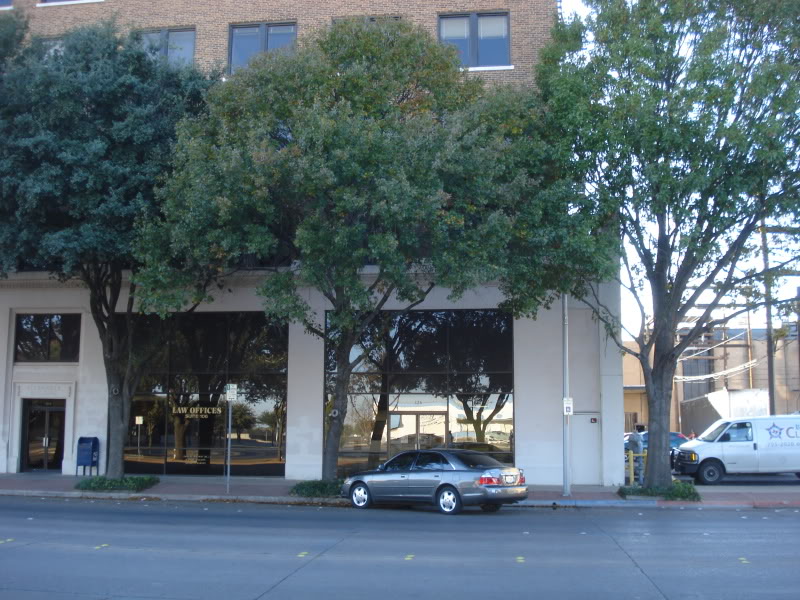
Across from the Alexander Building, at one time, was a row of stores and
offices, crowned by the Citizens Bank Building. Shown below in 1922, it
was a beautiful entrance to Abilene's Central Business District.
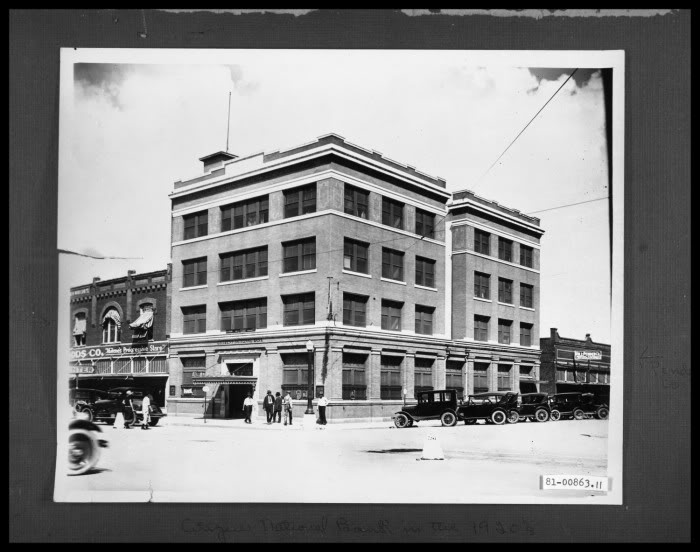
Today, more than half a dozen stores have been long ago replaced by a parking lot.
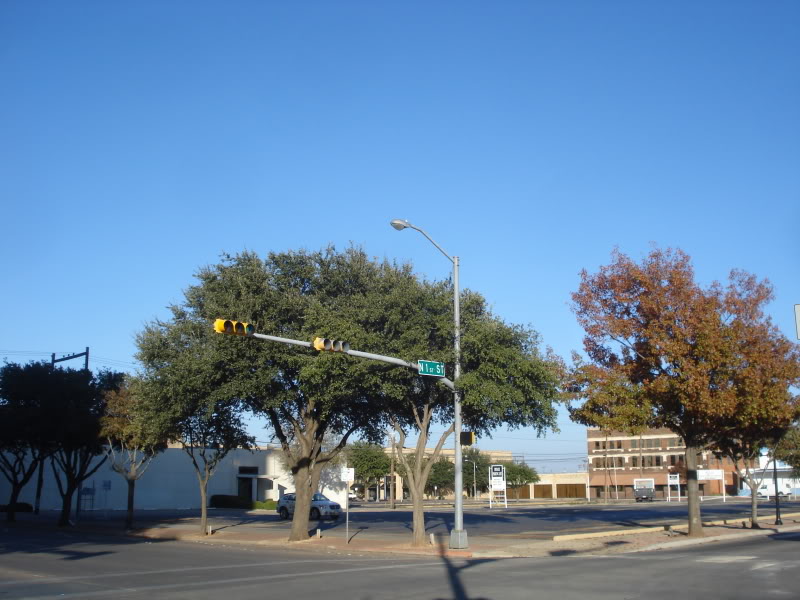
A quirky piece of art in front of the 1914 T&P Freight warehouse.
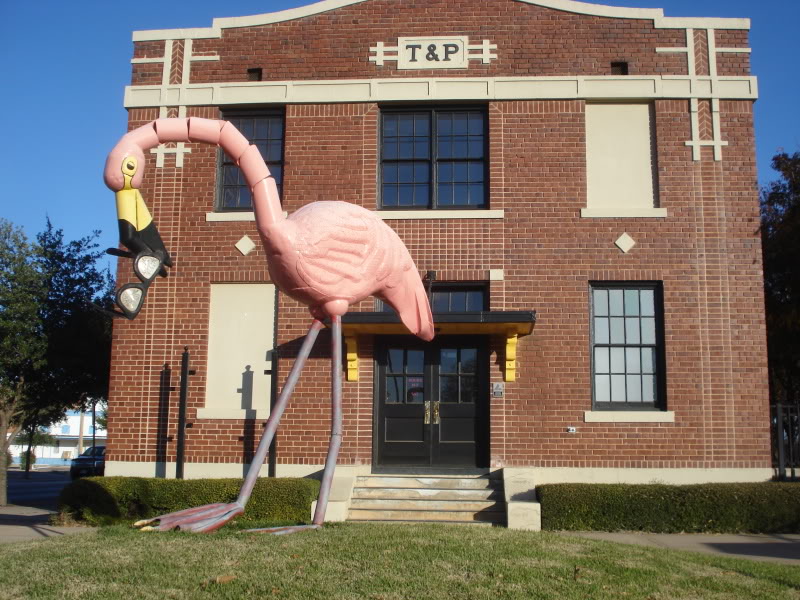
Horace Wooten, benefactor of the Wooten Tower and Paramount Theater,
made his fortune as a grocer. His store, on North First, still stands.
(Abt 1900)
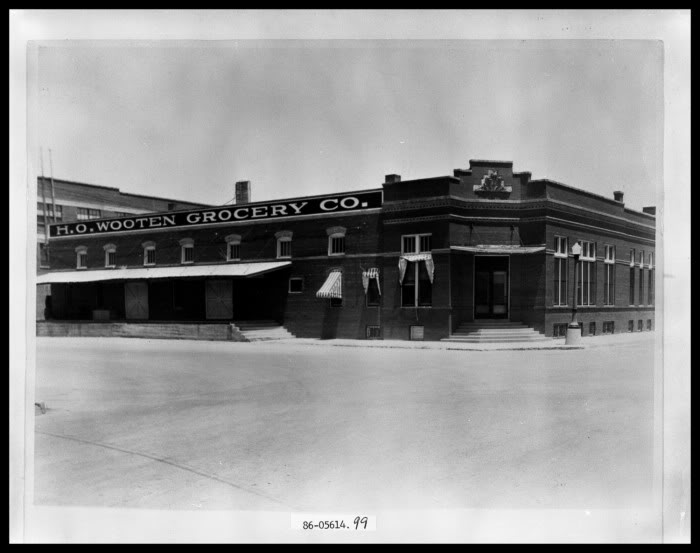
(Today)
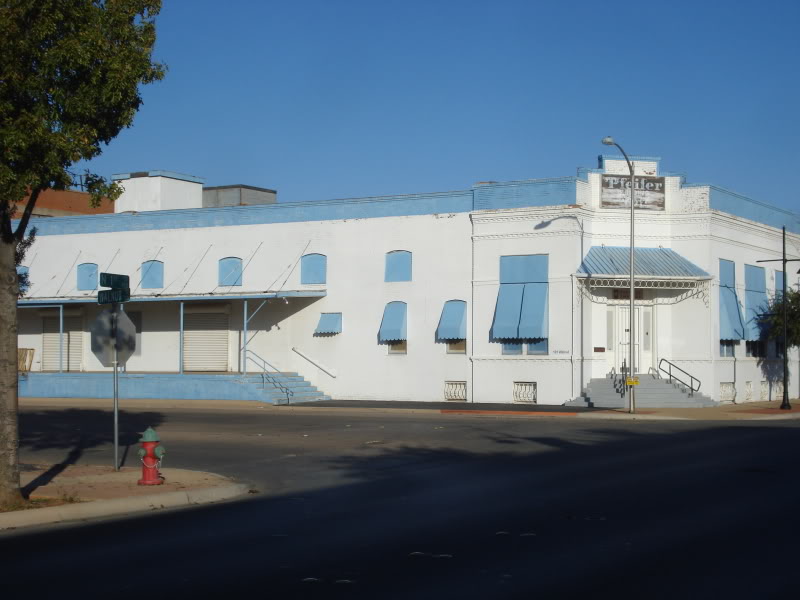
Another early-20th-century gem hidden in obscurity.
(In 1920)
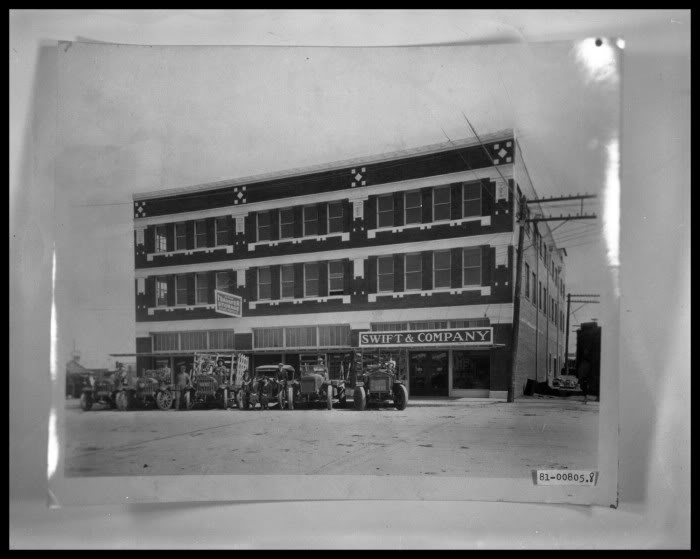
(Today)
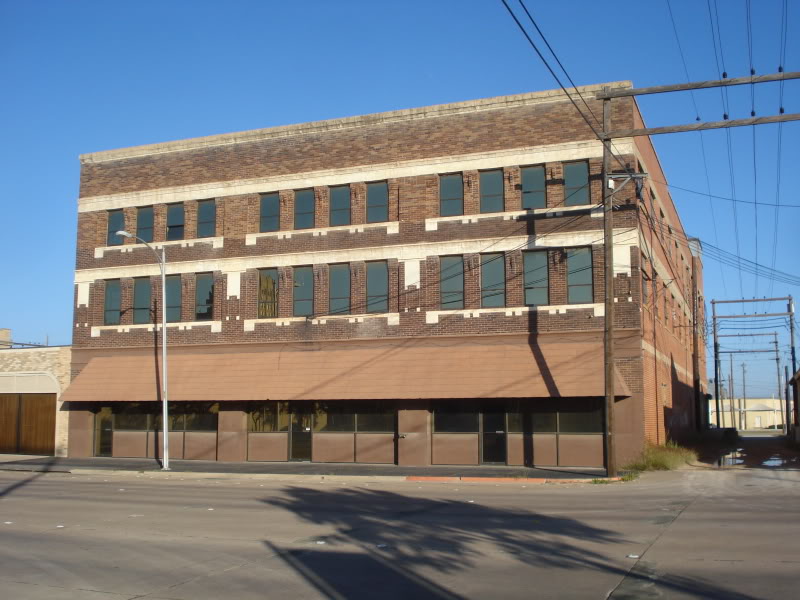
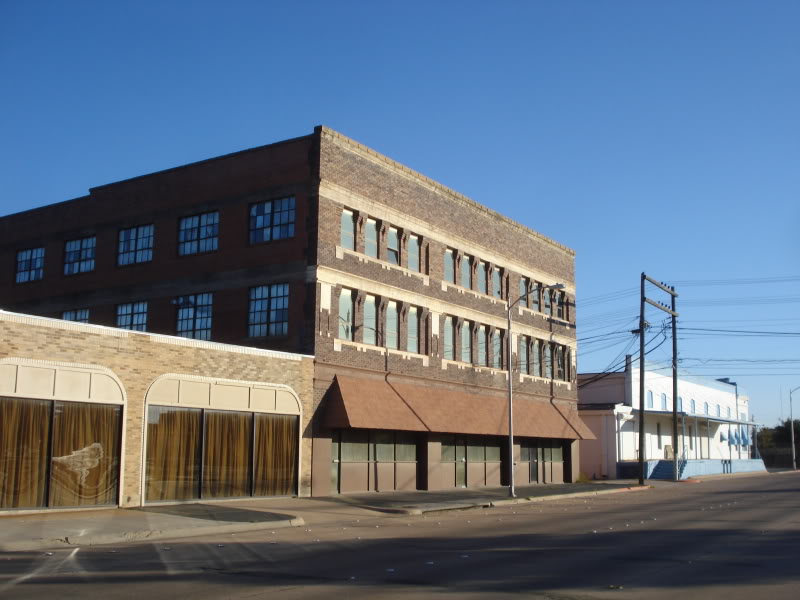
Wandering east, into Abilene's seldom-trod warehouse district.
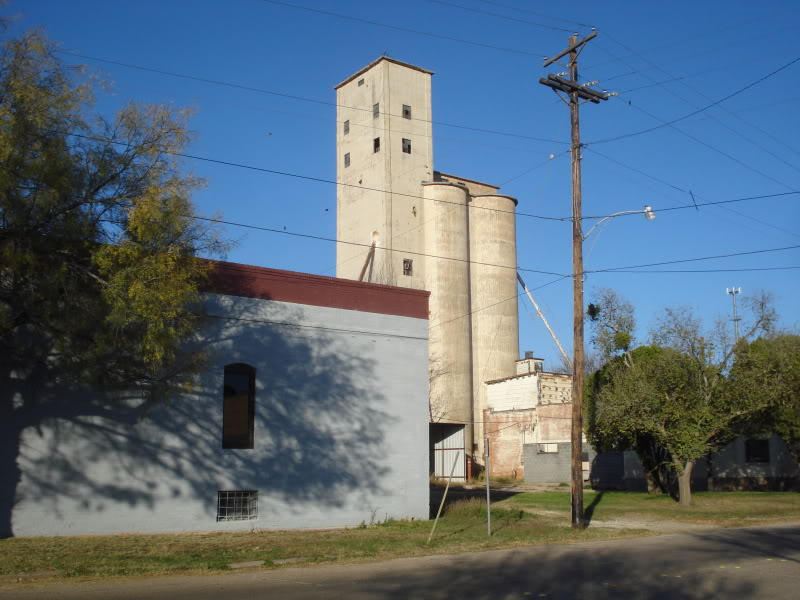
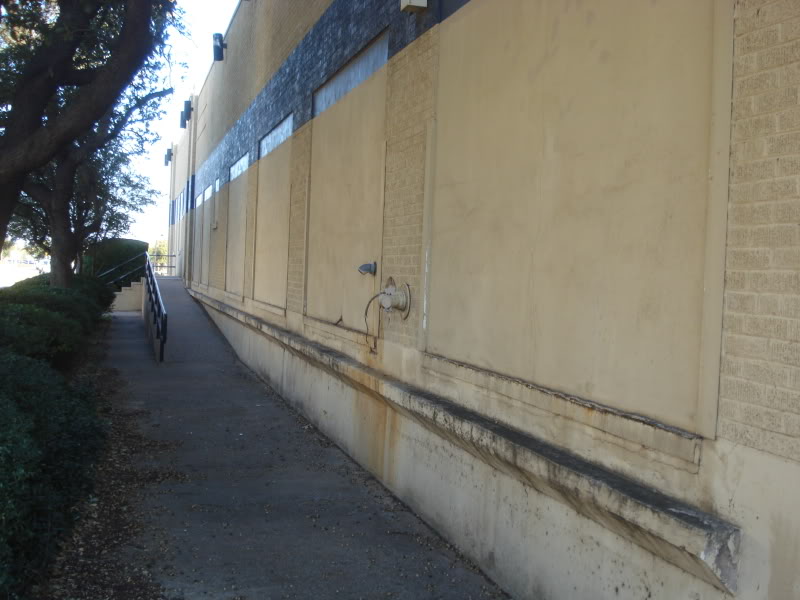
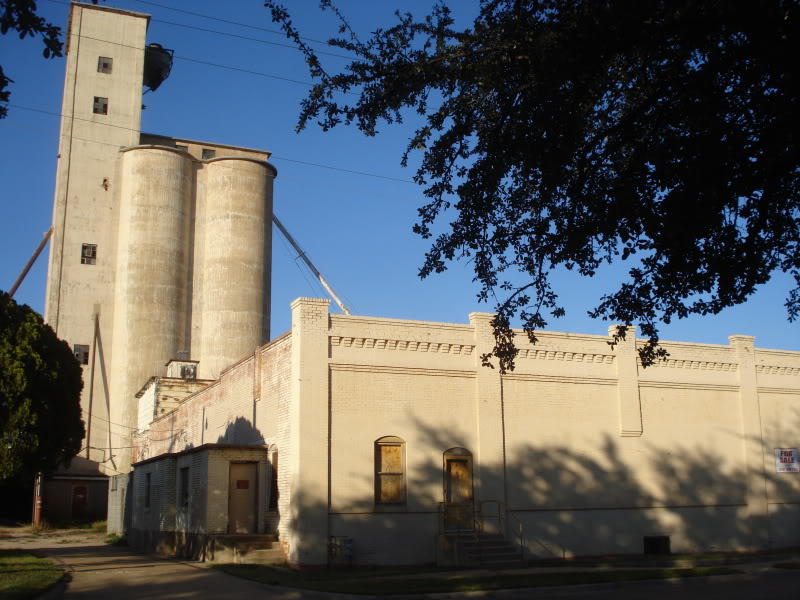
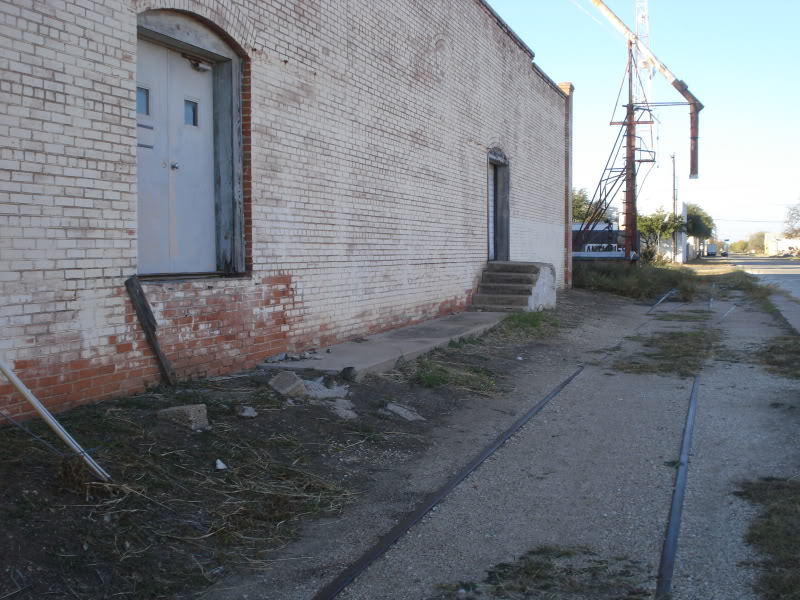
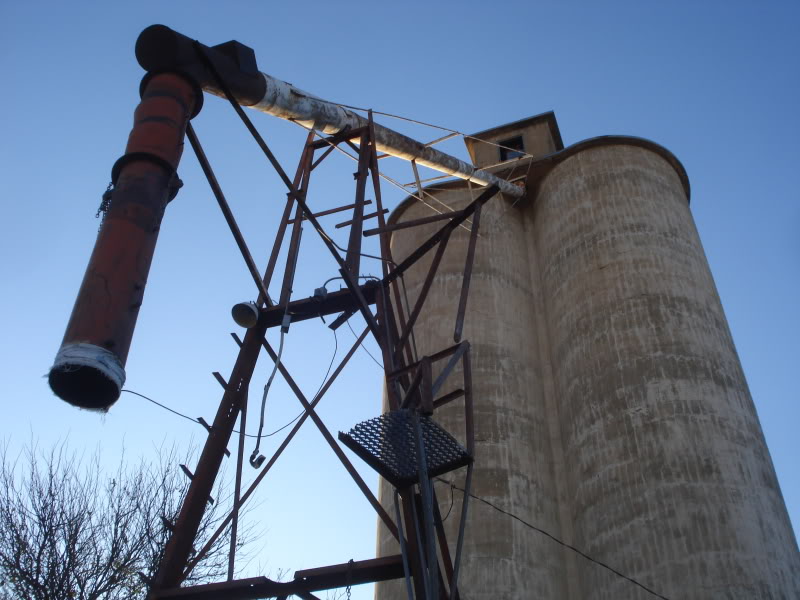
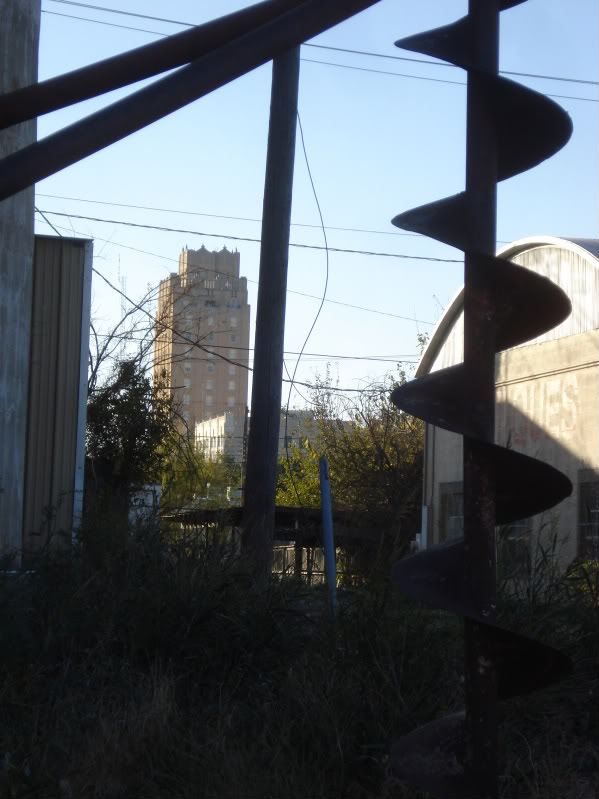
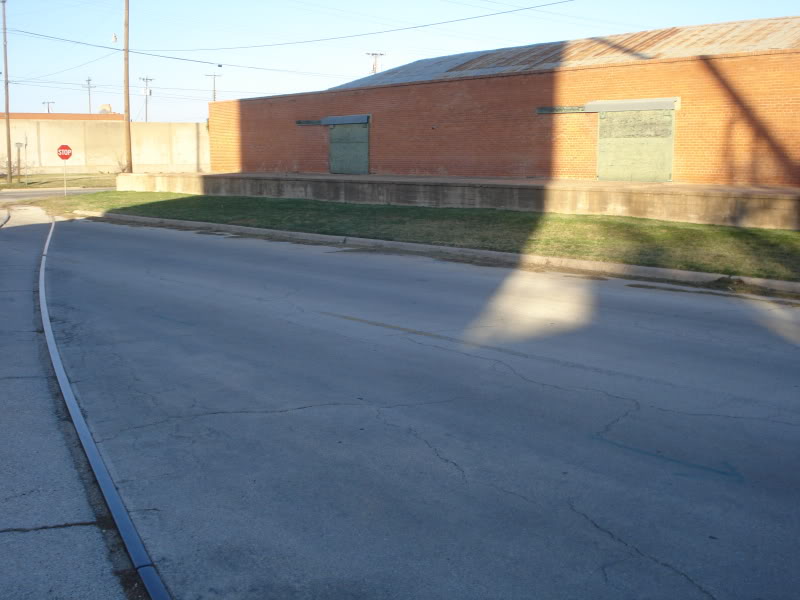
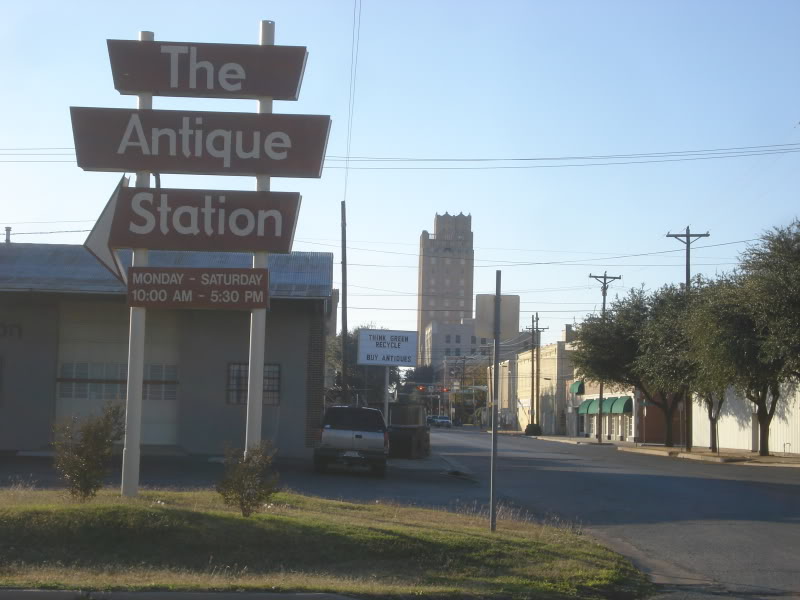
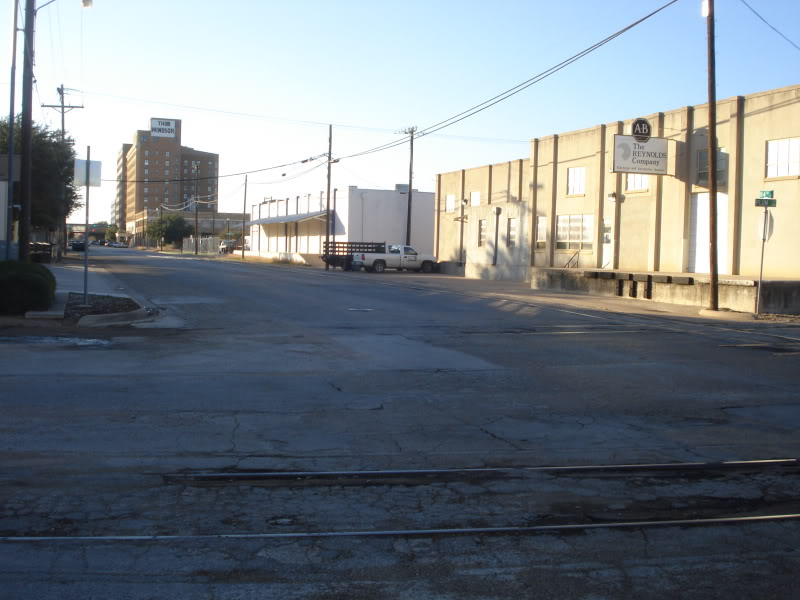
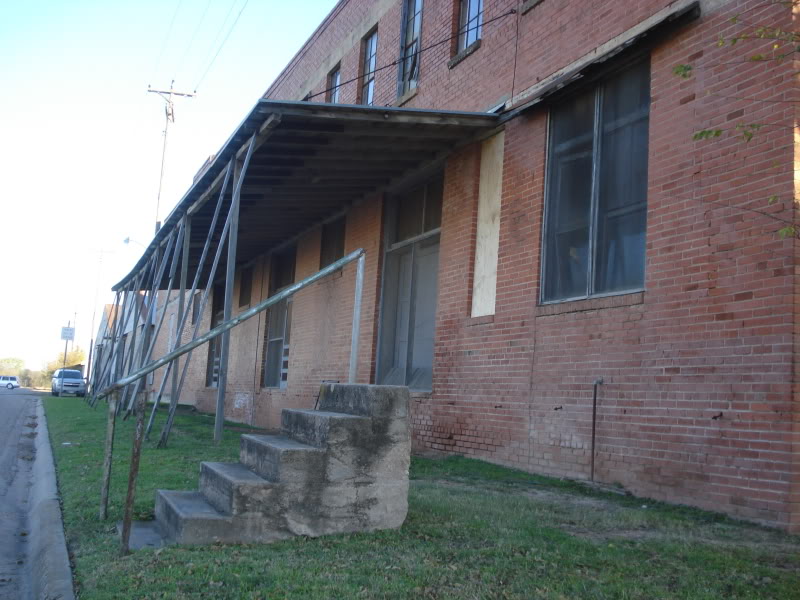
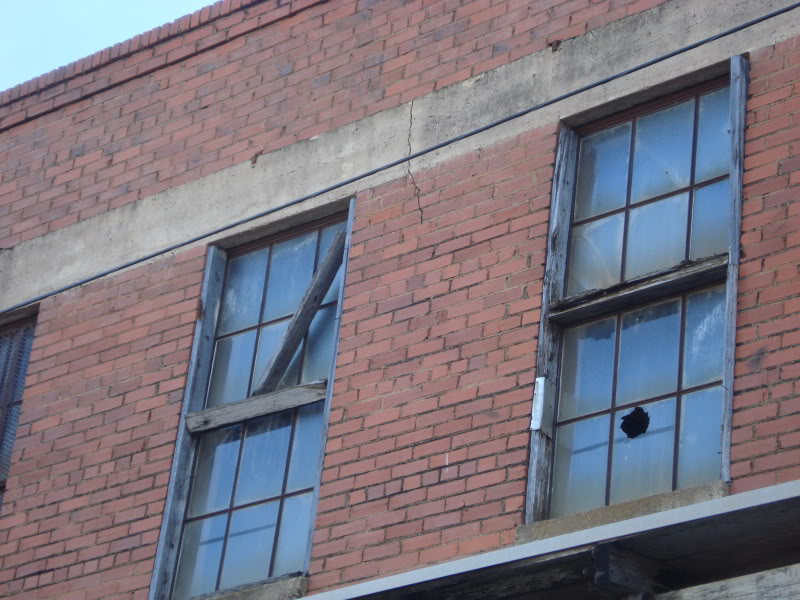
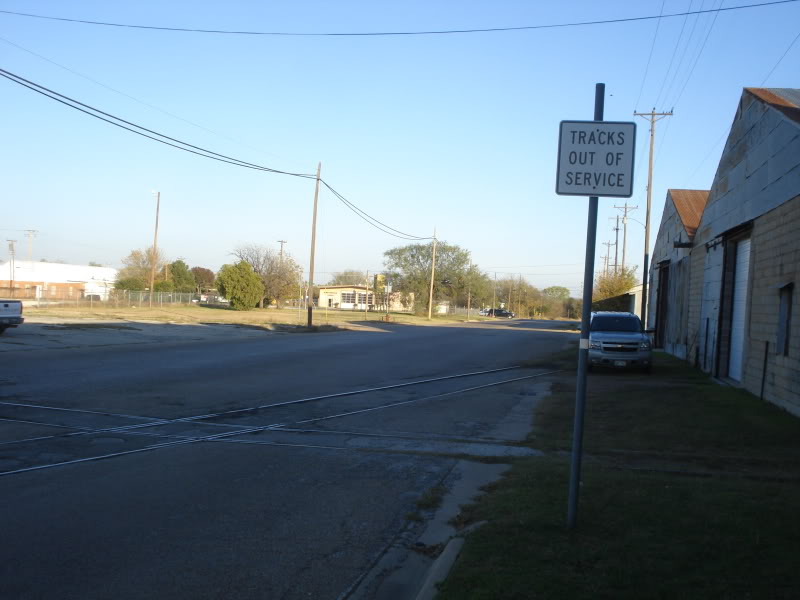
On Plum Street, a 1967 warehouse burned to the ground about a week ago. From the Abilene Reporter-News:
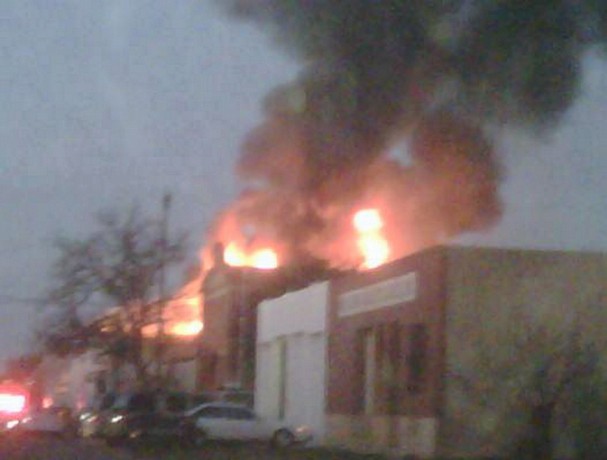
The remains:
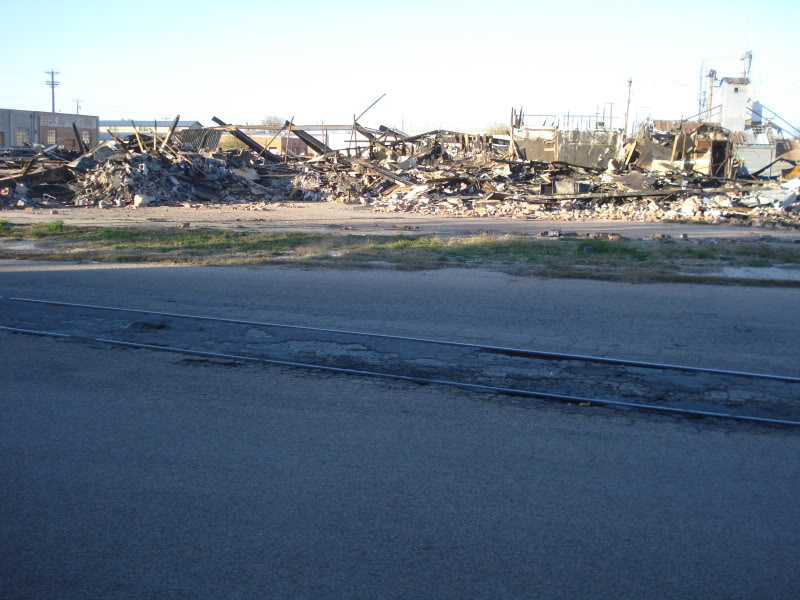
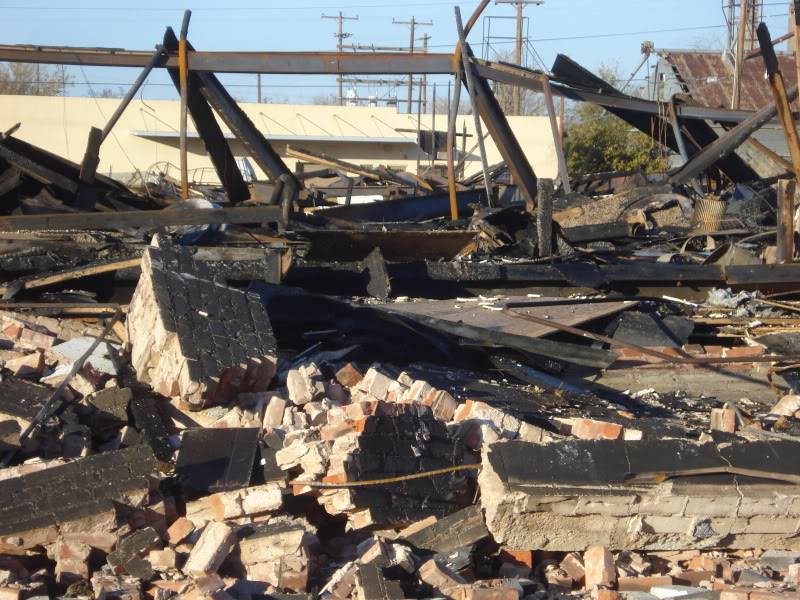
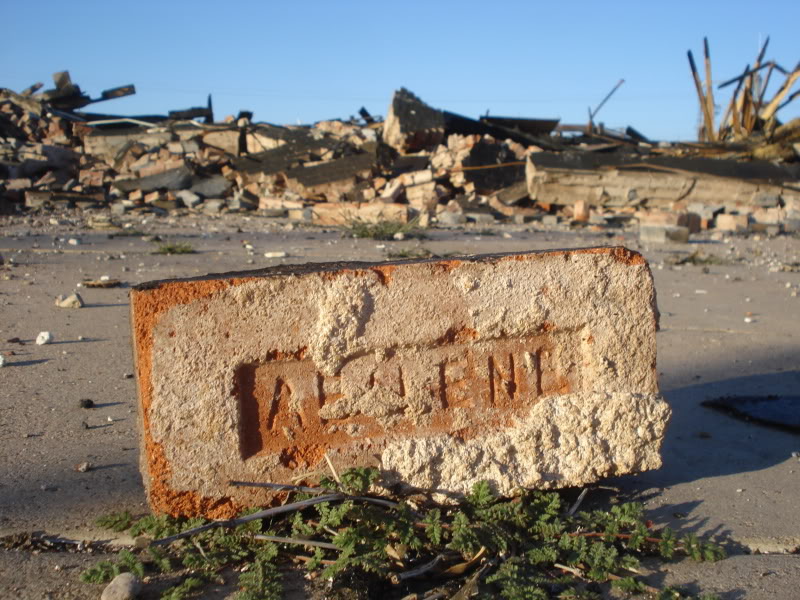
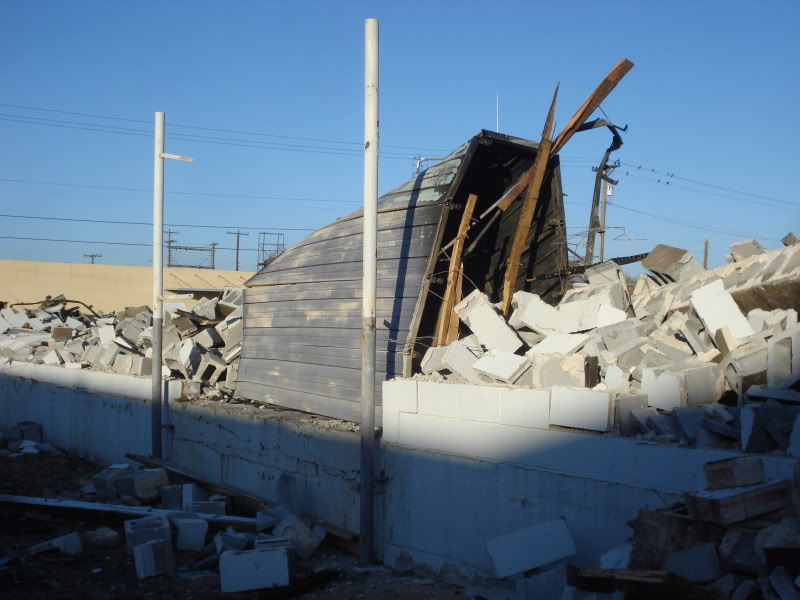
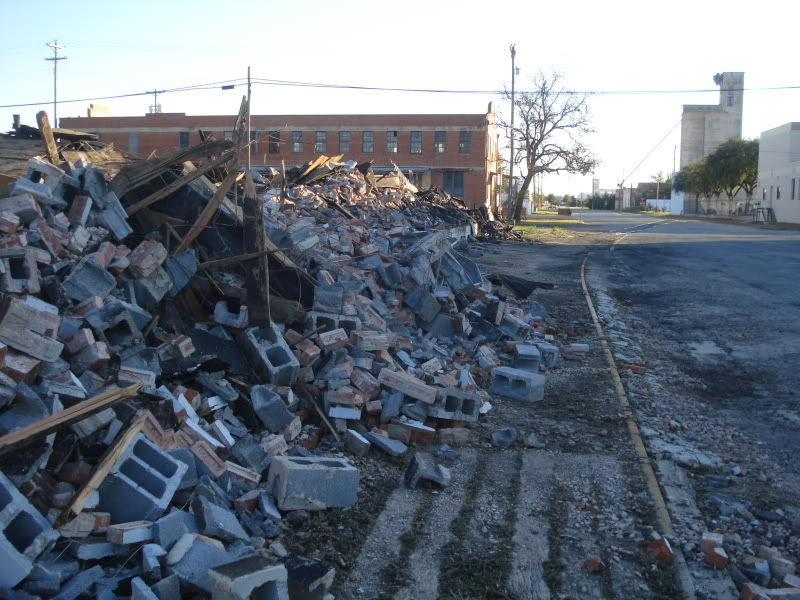
With a headache forming from the noxious fumes emanating from the pile, I
move on the less-smoldering portions of the neighborhood.
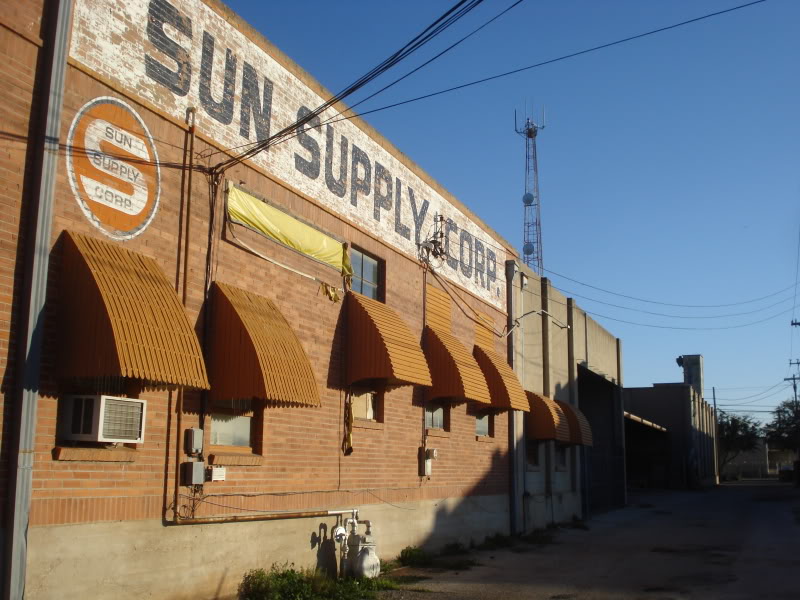
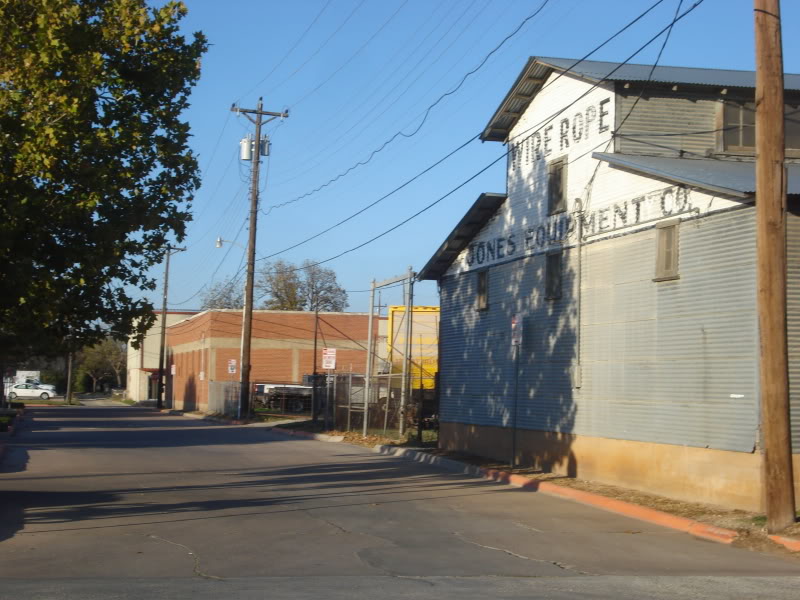
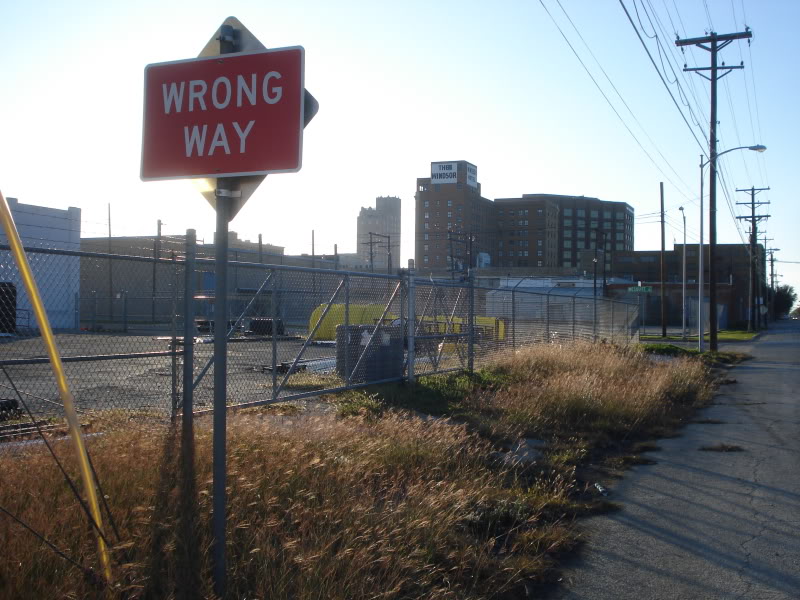
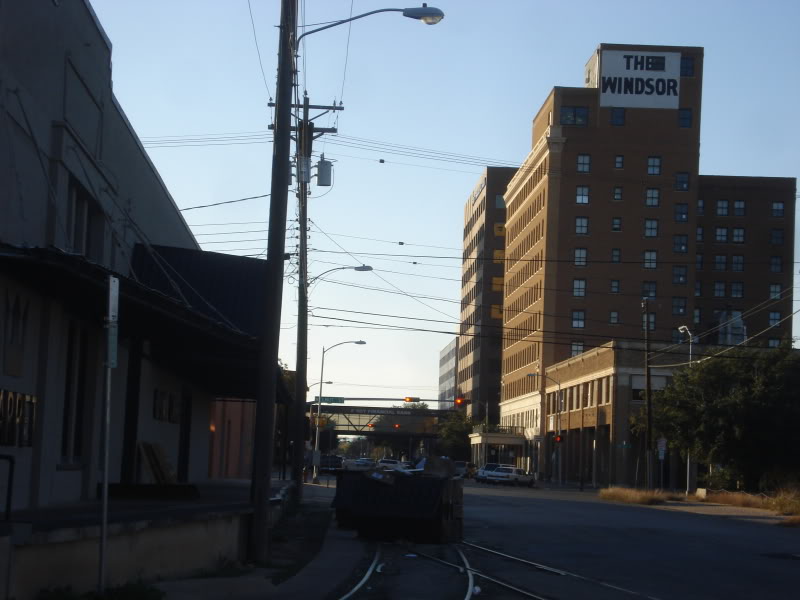
The trees (complete with planters) are a nice touch for a street with no sidewalks...
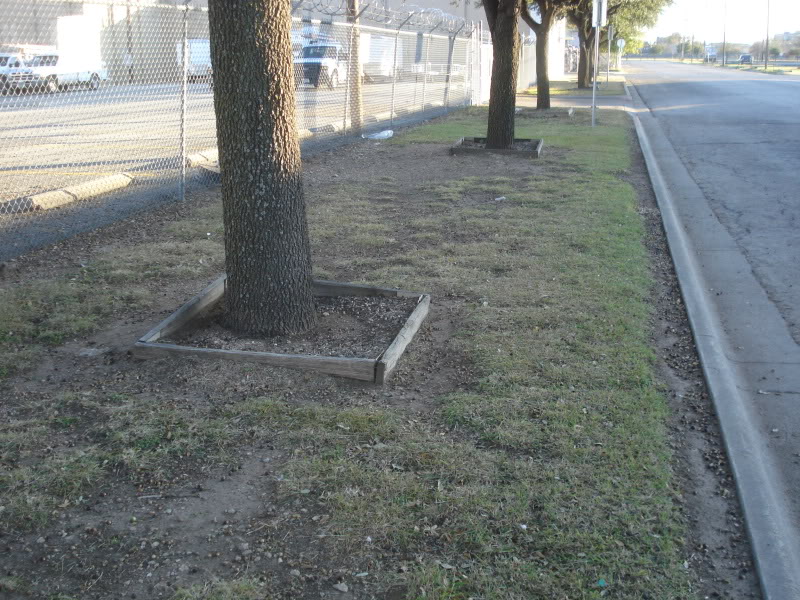
Two blocks from the burned warehouse stood for about a century Abilene
Candy Company. It was here that the edible ink used to print messages on
lollipops was invented.
(In 1930)
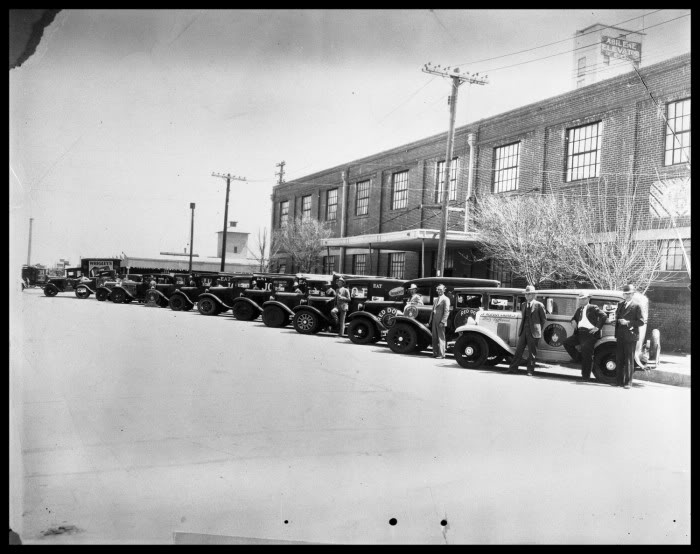
In September, the business was consumed by flames.
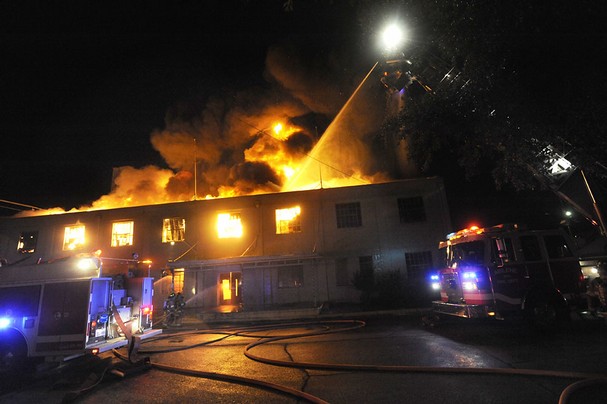
Today, the blackened wreckage is fenced off.
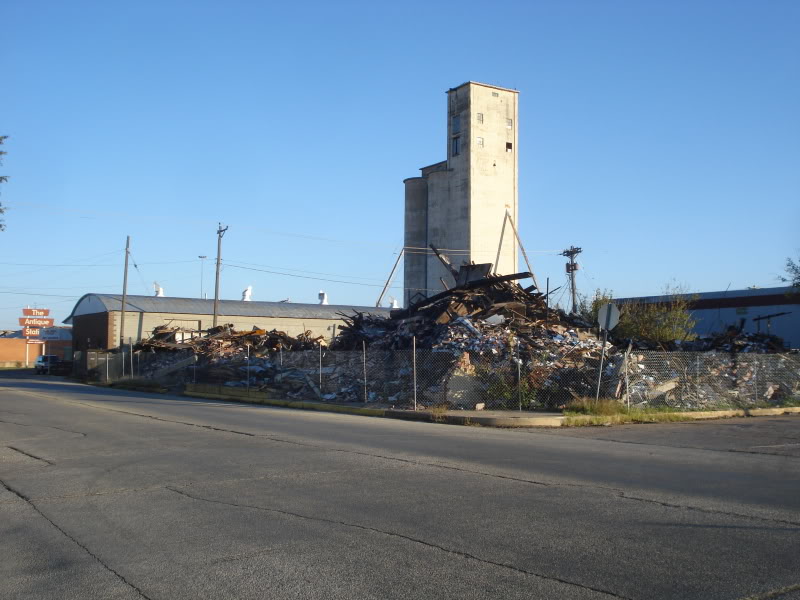
A bookbinding company
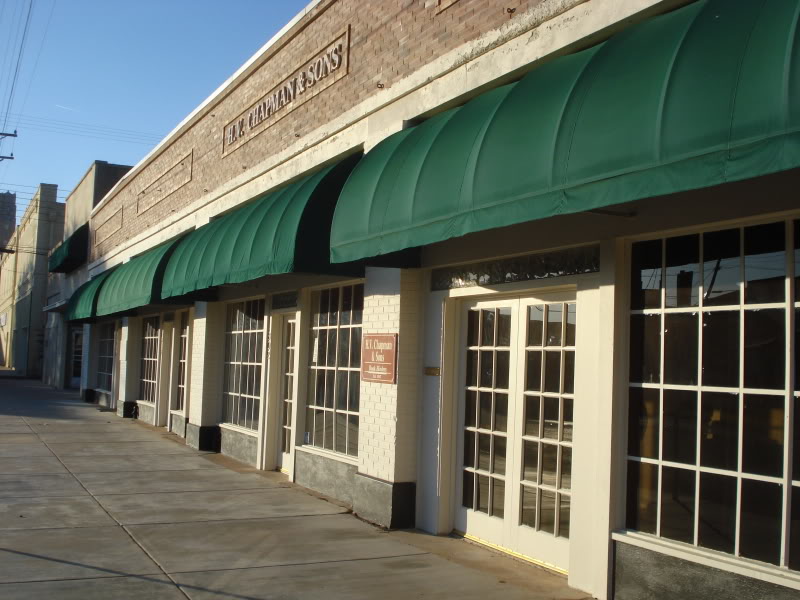
Abilene's Postal fleet.
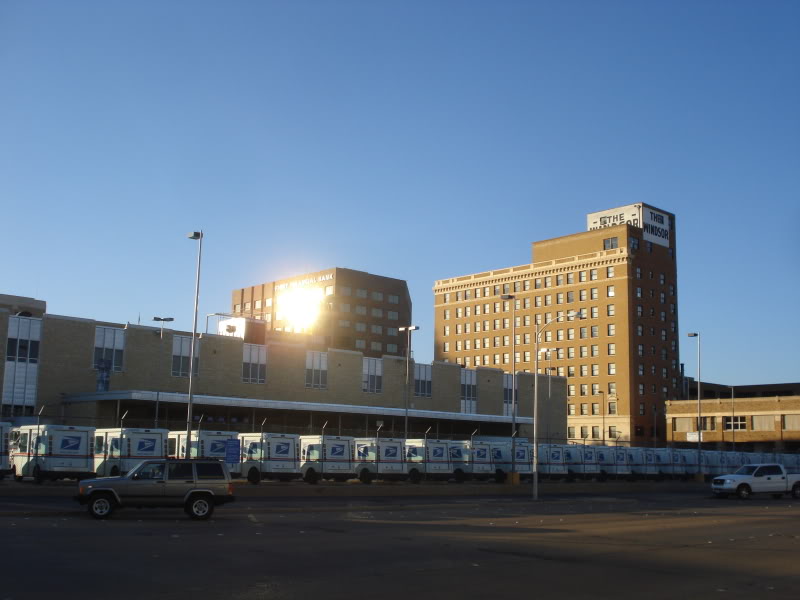
Not all theaters downtown were as lucky as the Paramount. One casualty
was the Majestic, about a block south of the Paramount on Cypress.
(In 1960)
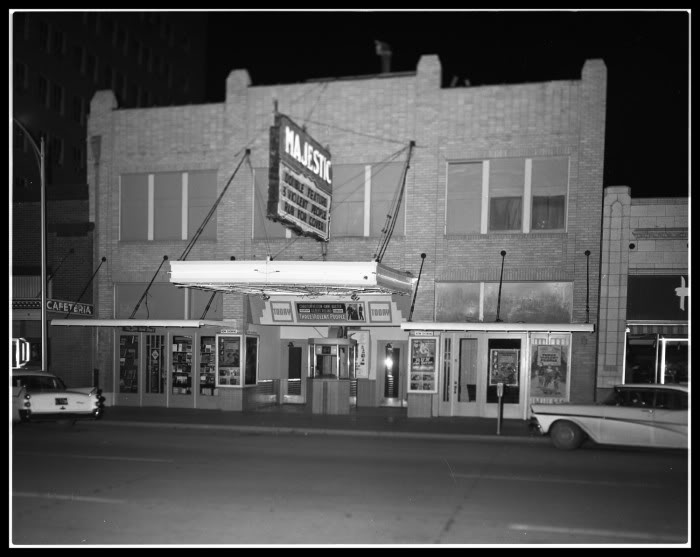
Today, it's a parking lot.
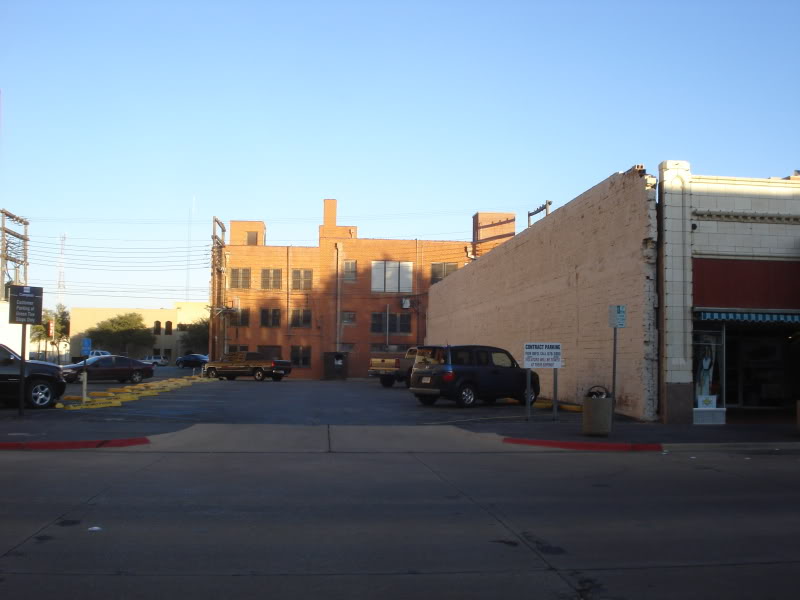
Another block south, the Queen Theater was similarly ill-fated.
(In 1959)
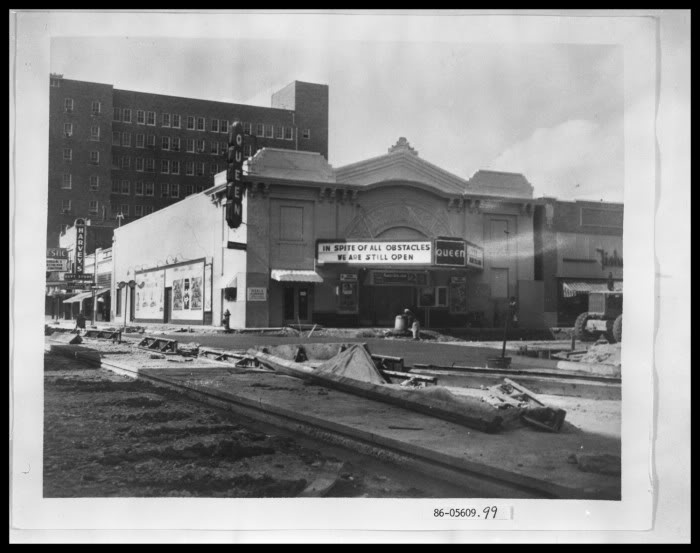
It's not as bad as being a parking lot, though. The Queen was transformed into a memorial park complete with waterfall.
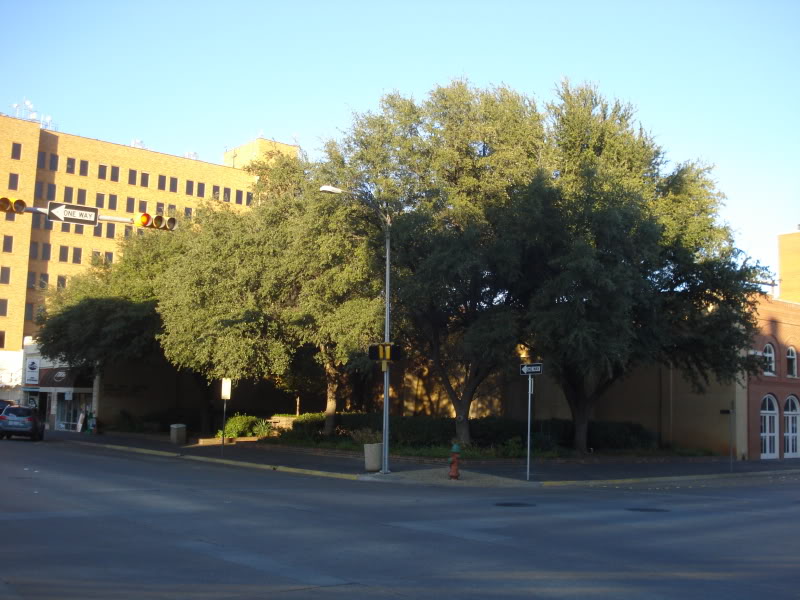
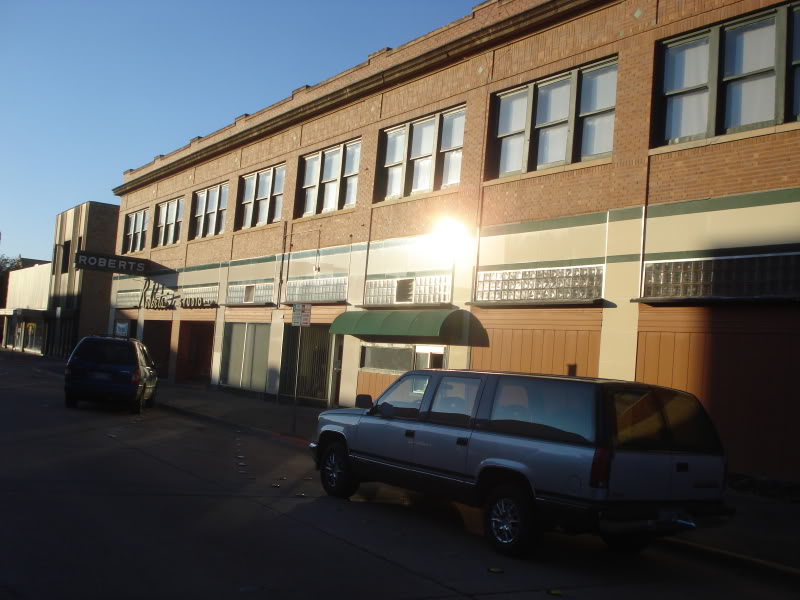
Returning to my car as a train rumbles by.
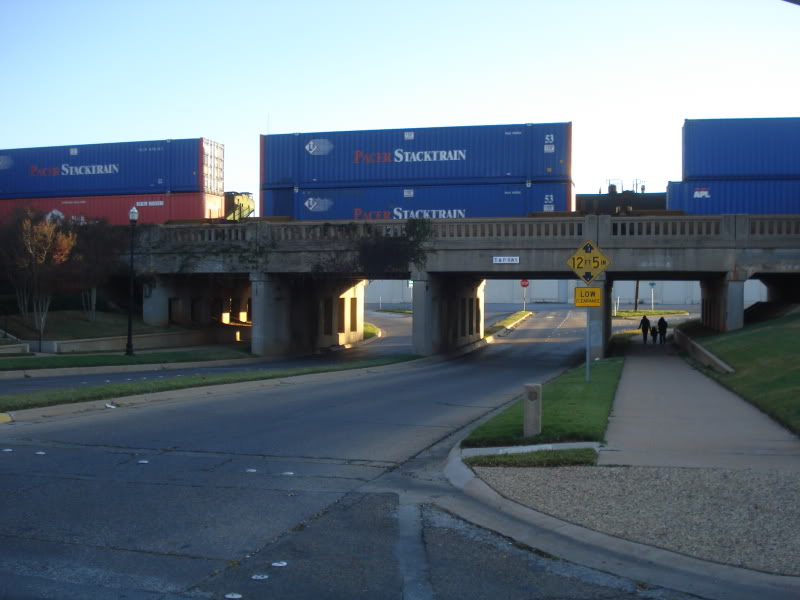
The end.
Note: See the original post here.
 November 23rd, 2009
November 23rd, 2009  November 23rd, 2009
November 23rd, 2009 















































































































